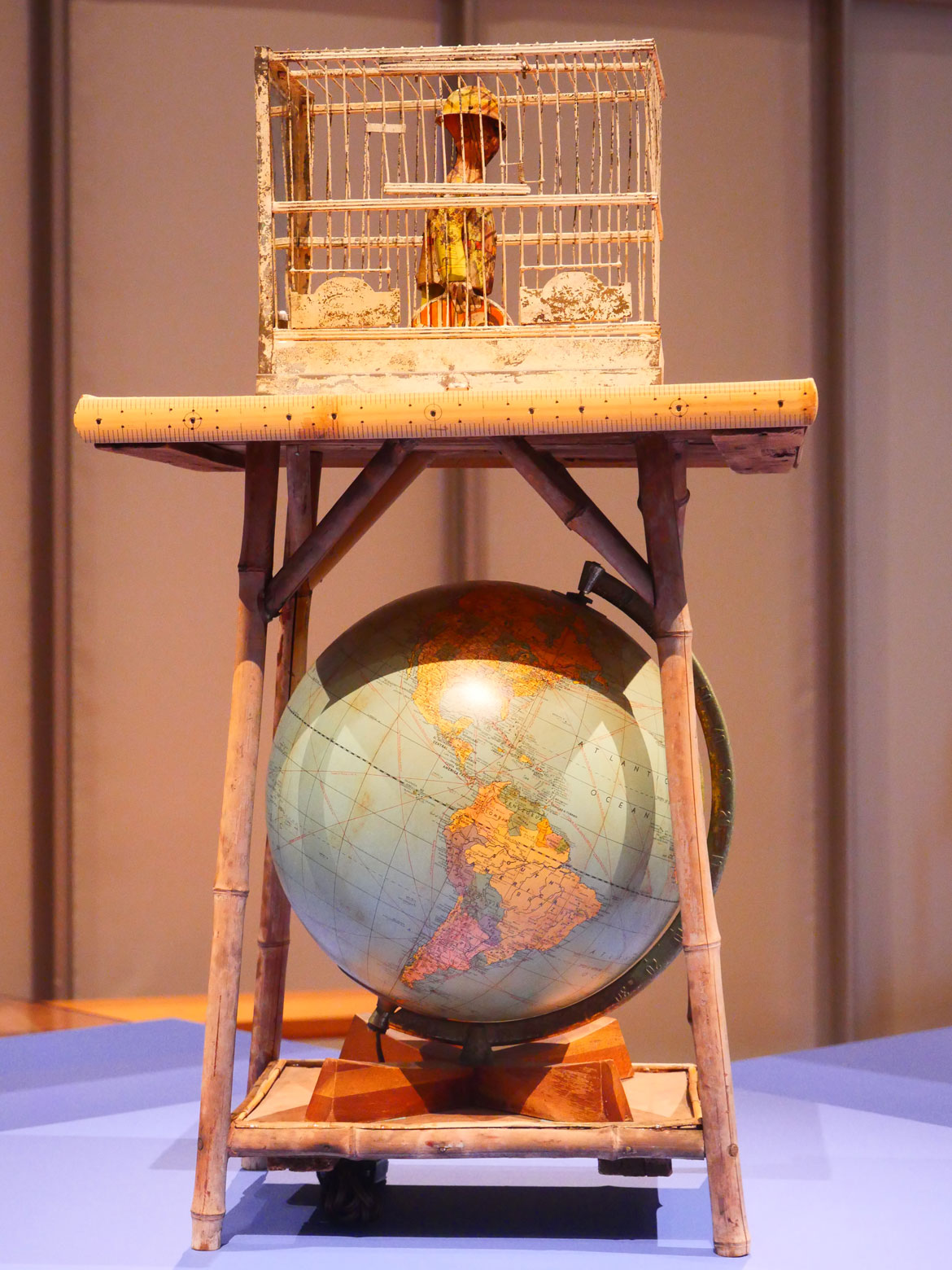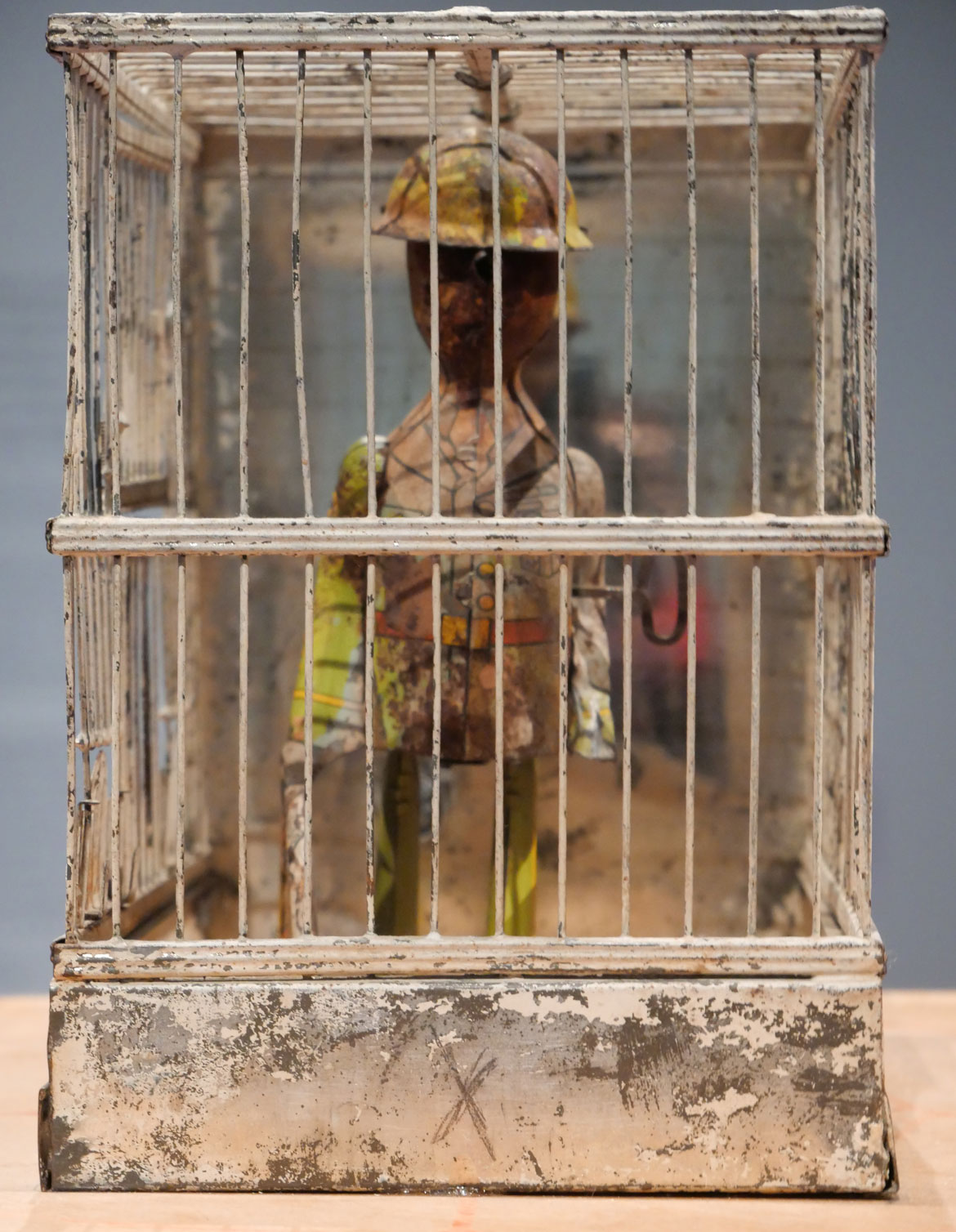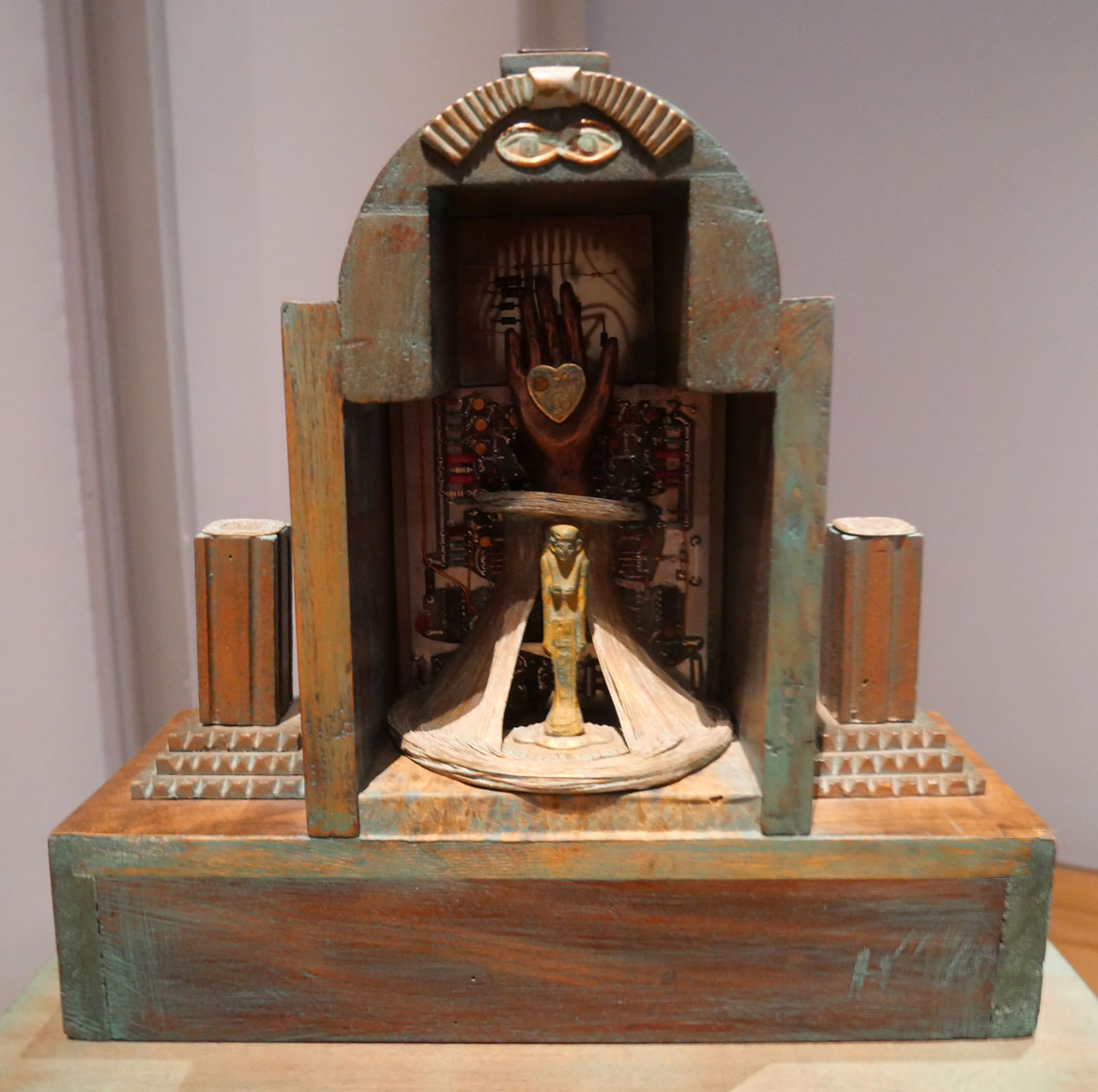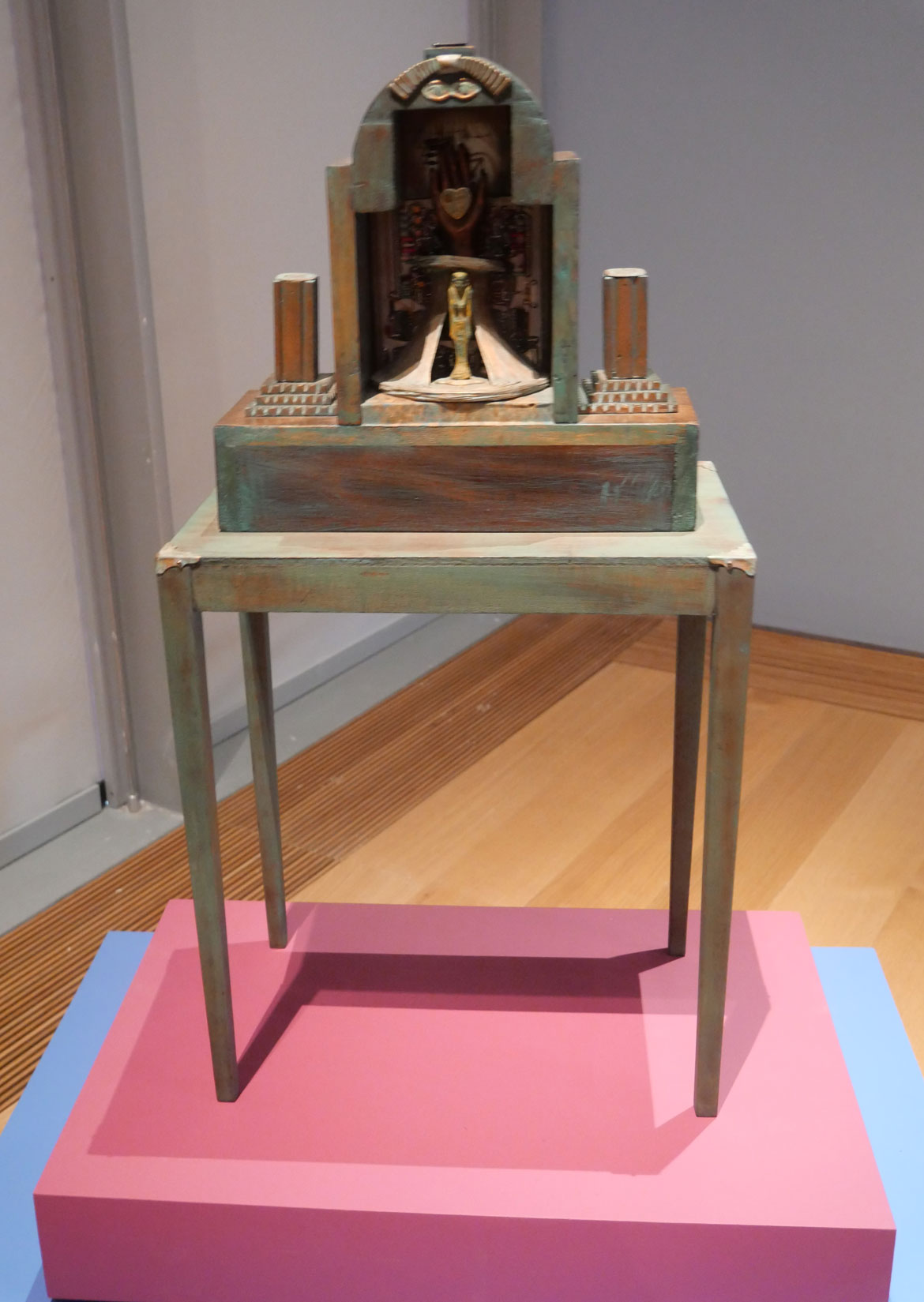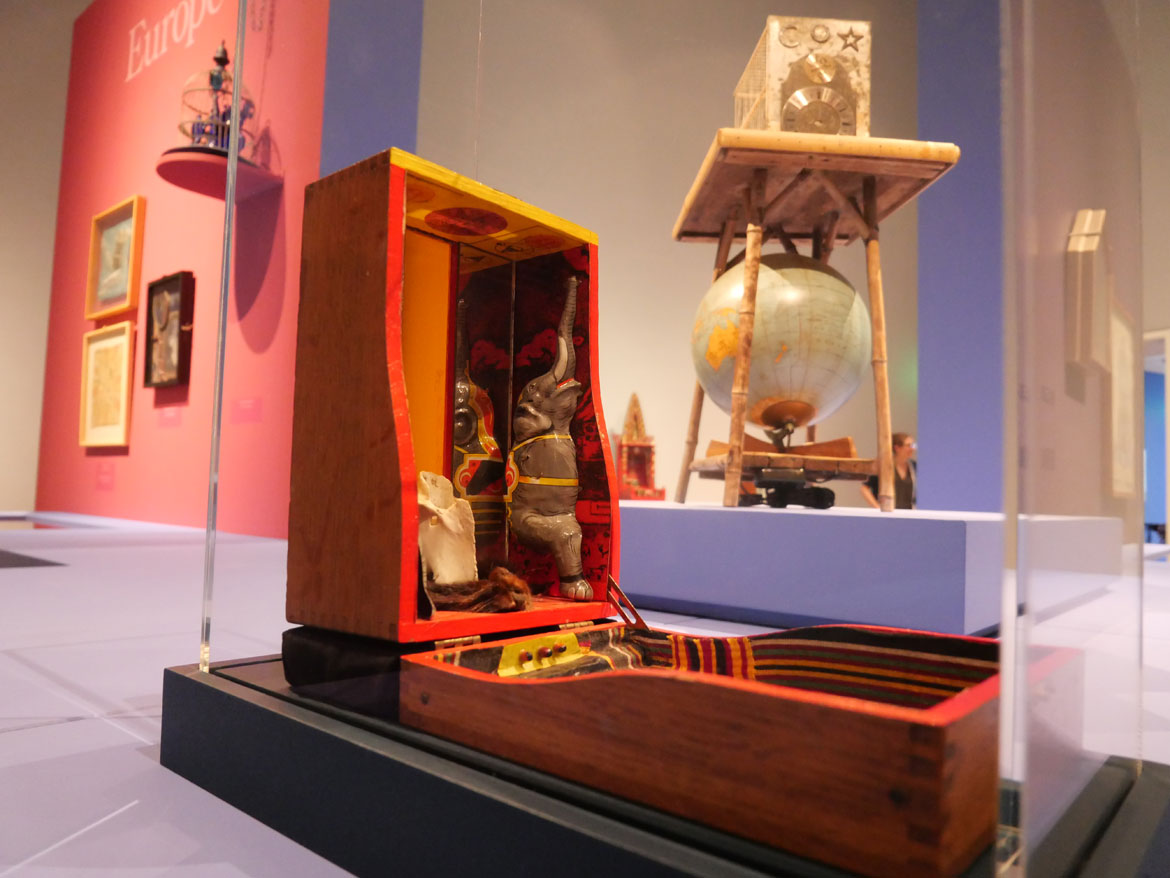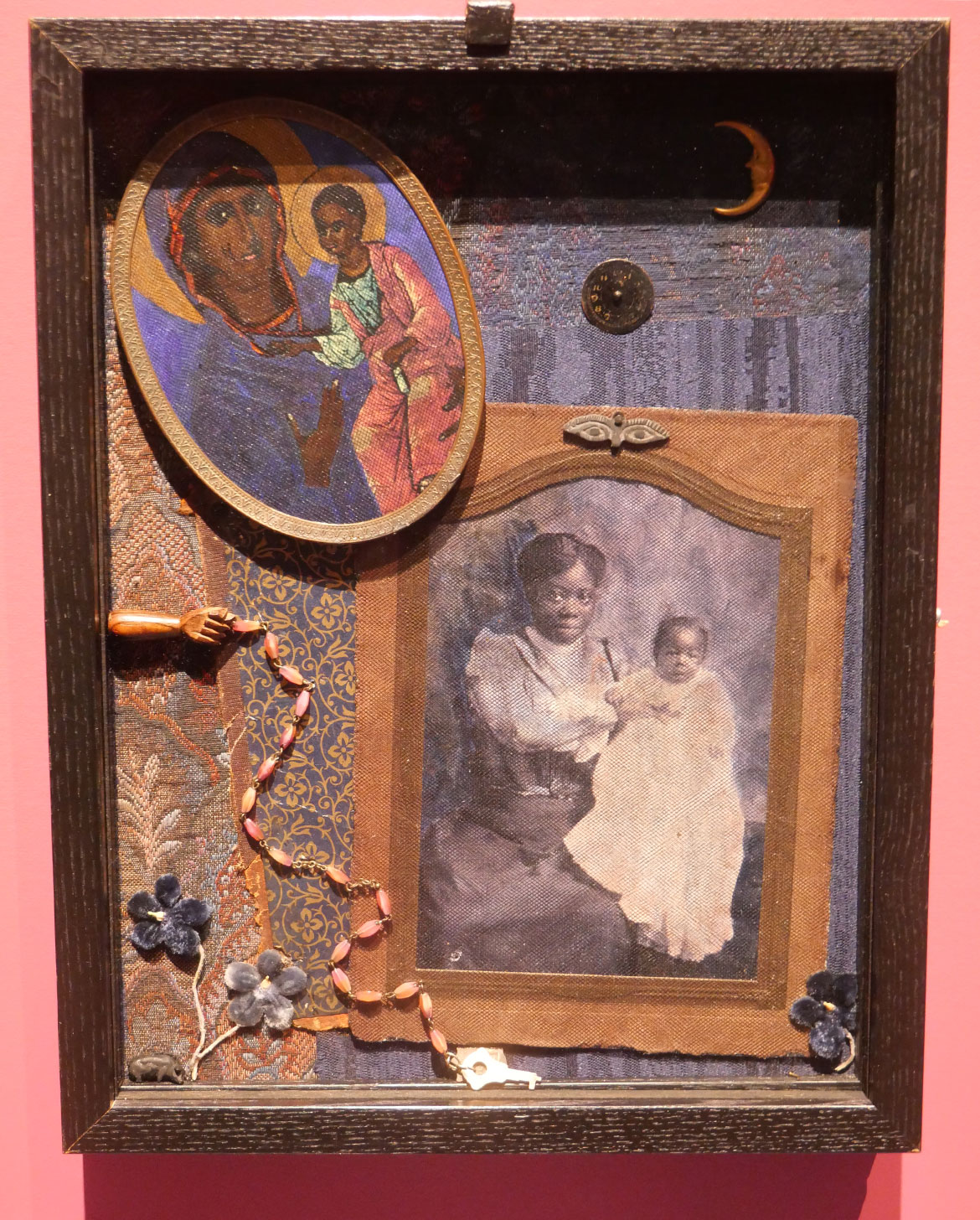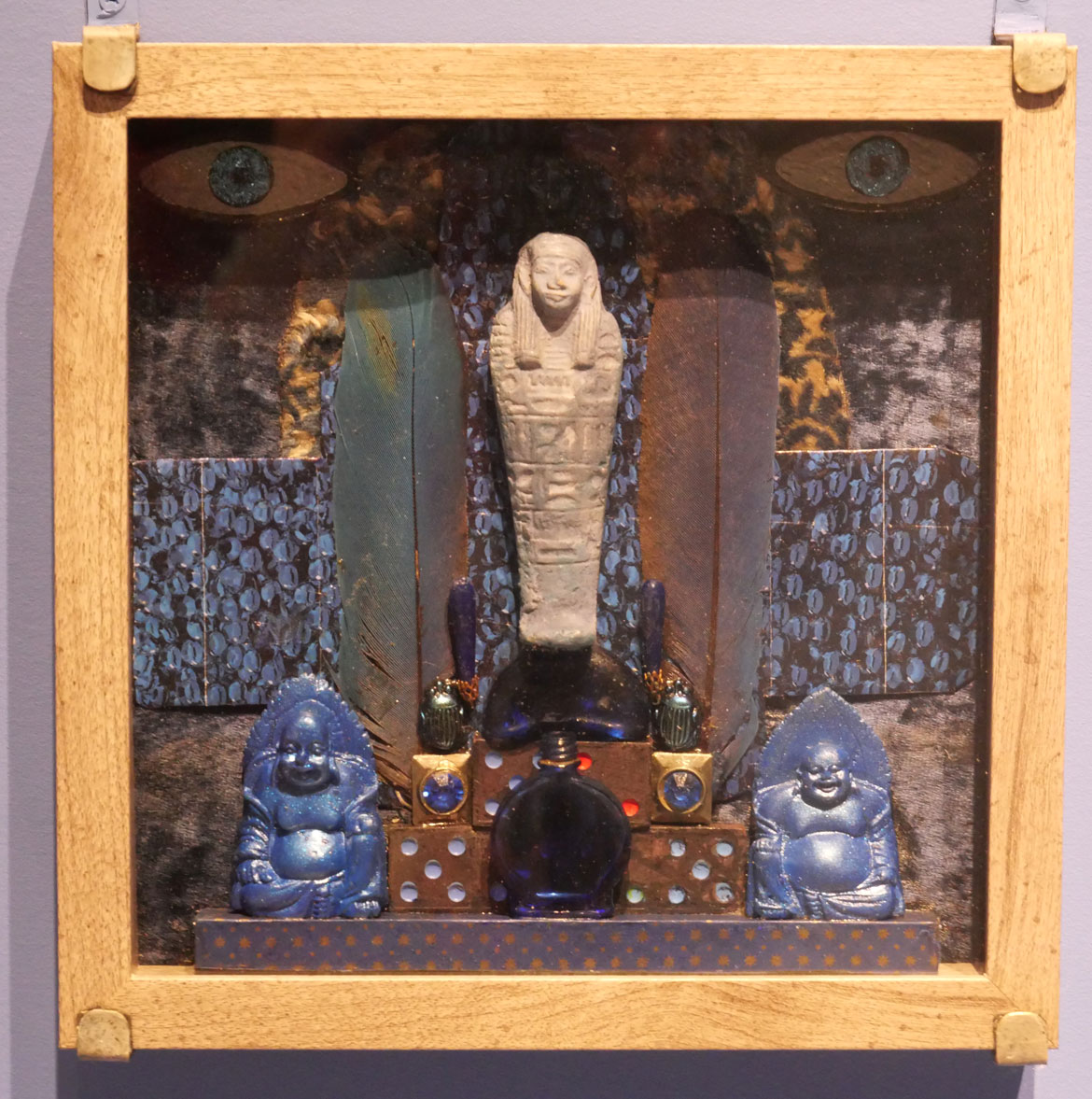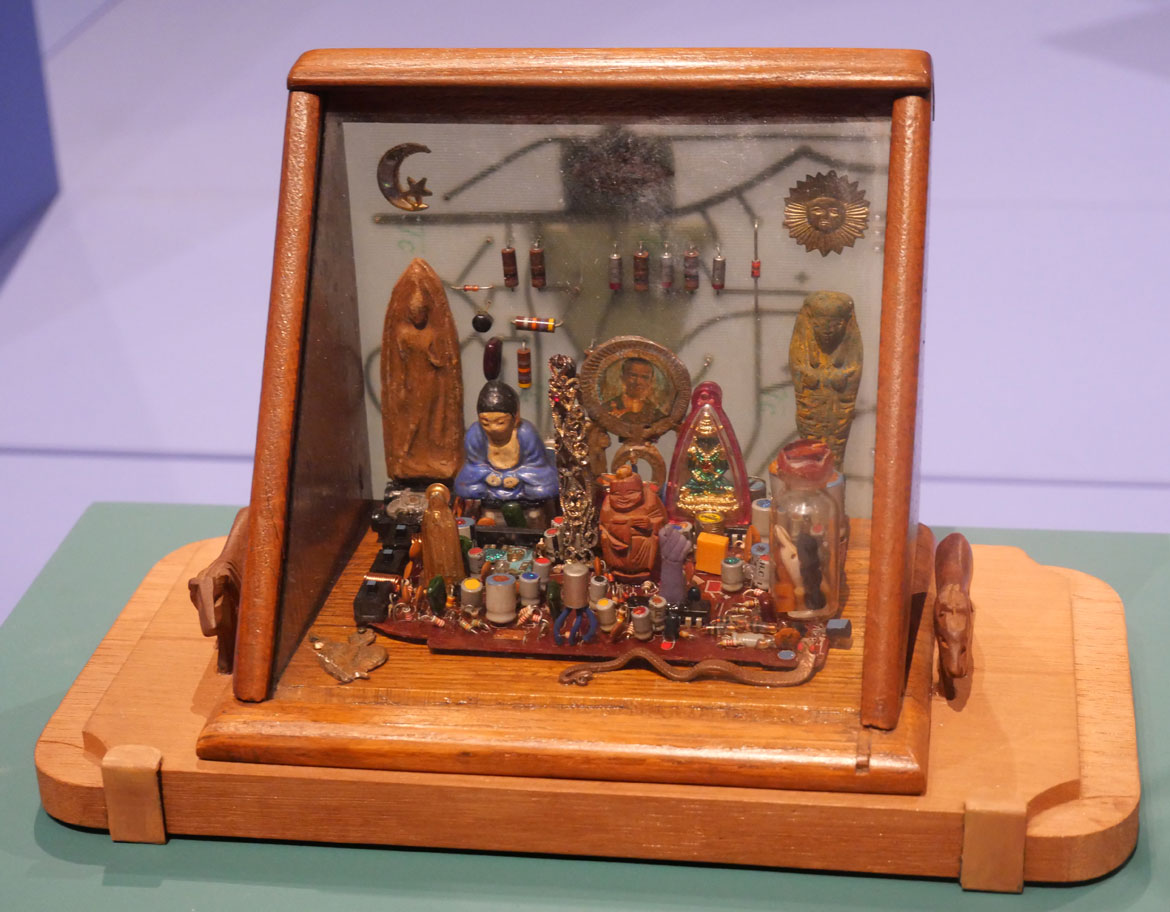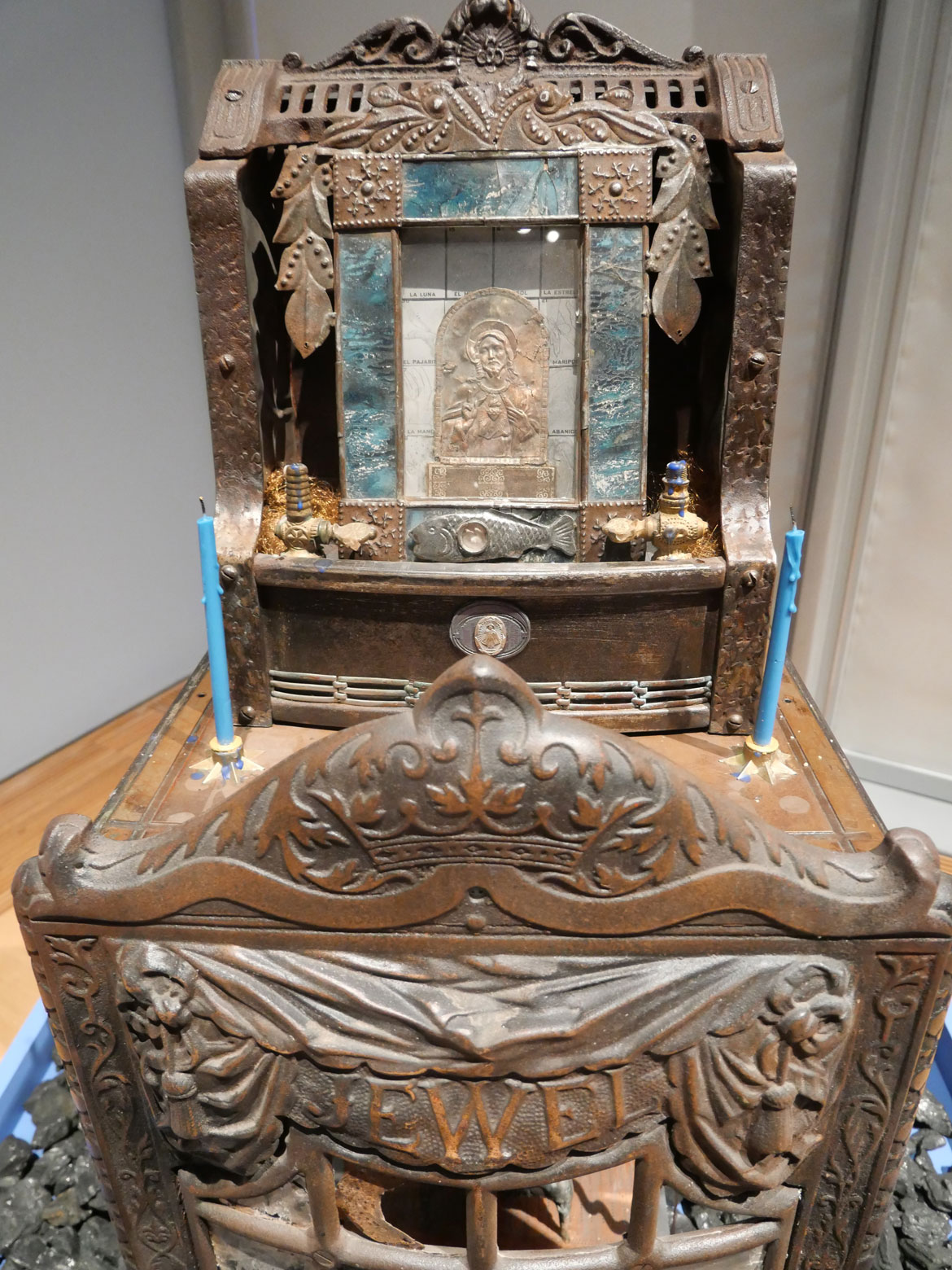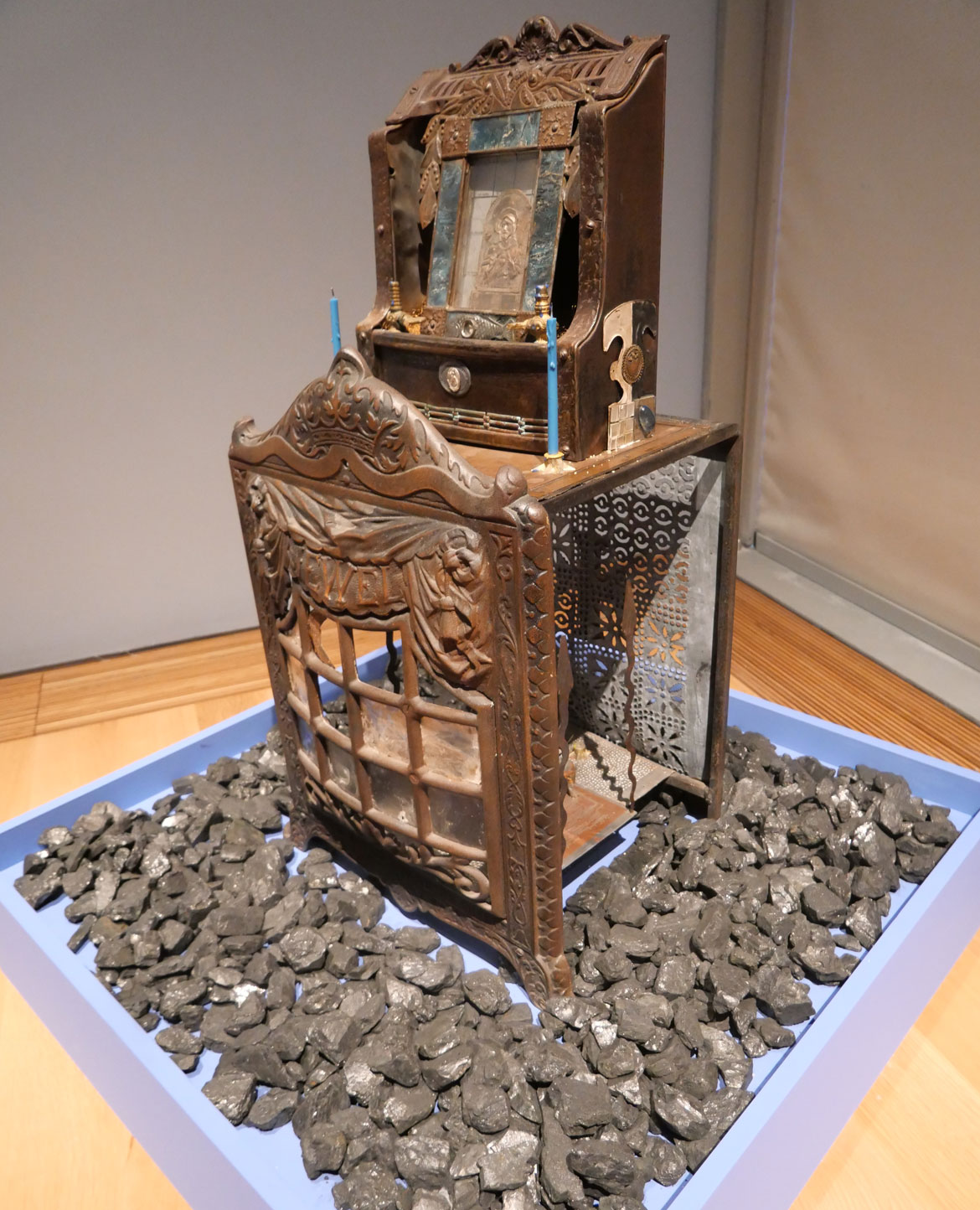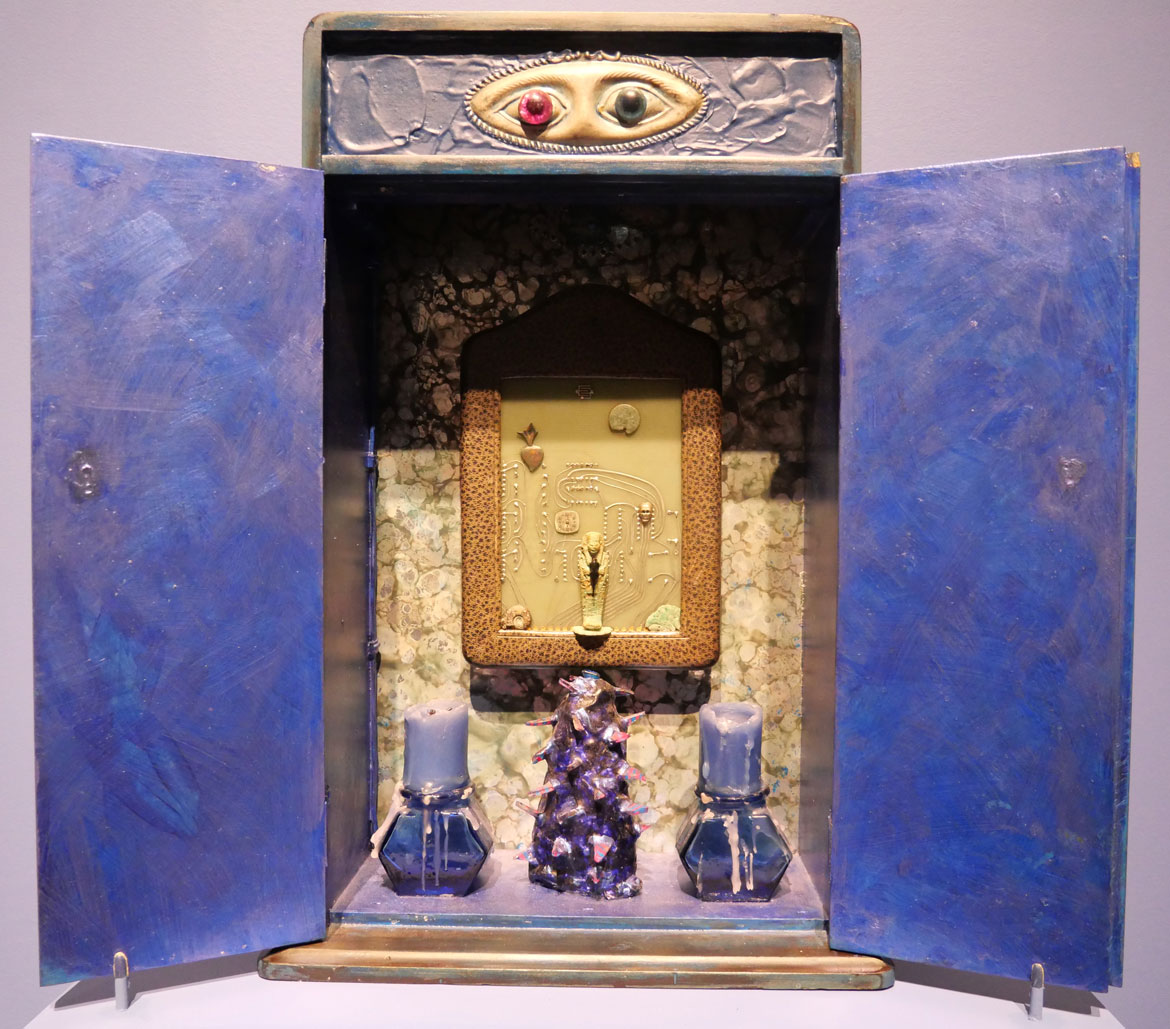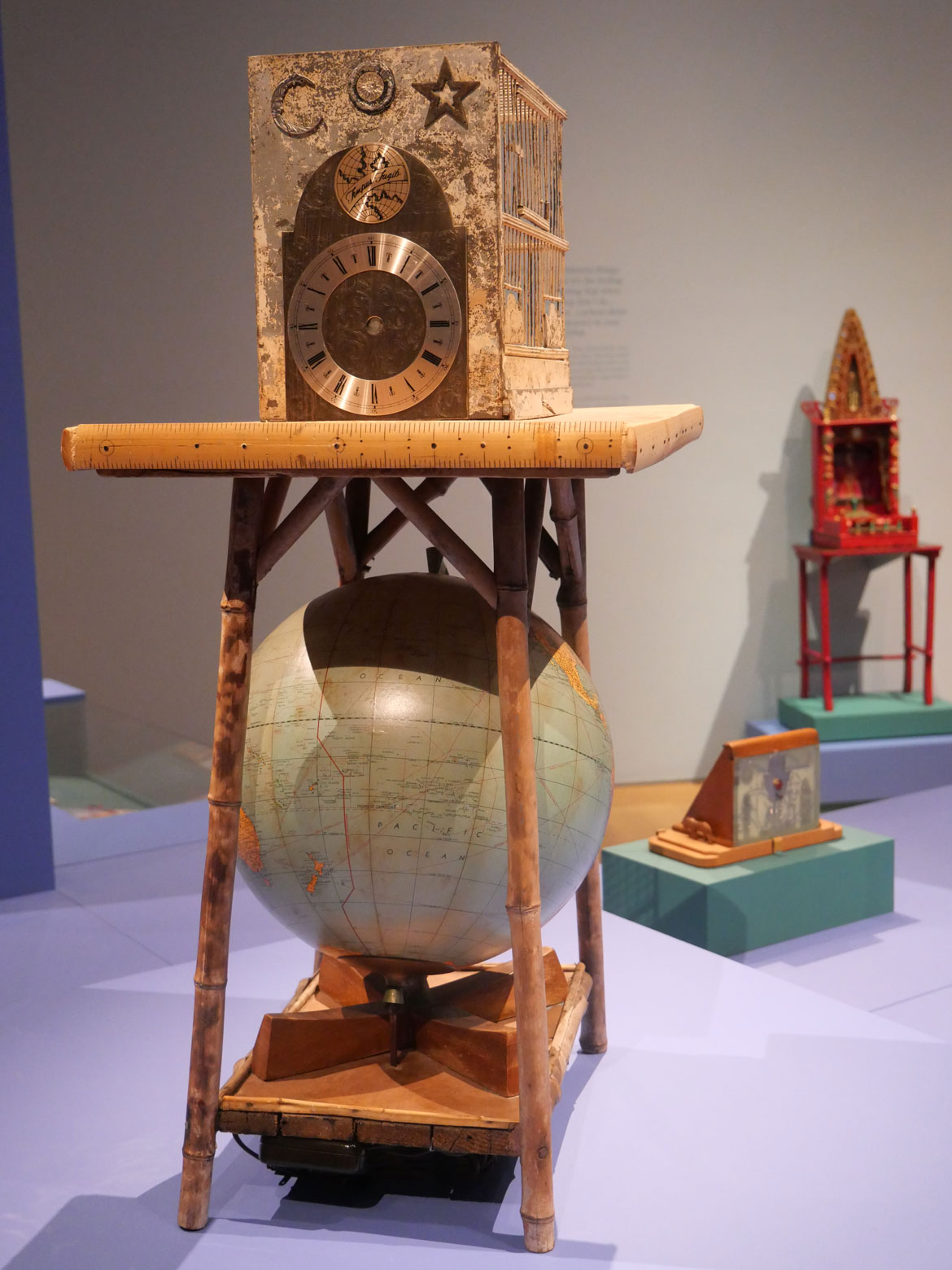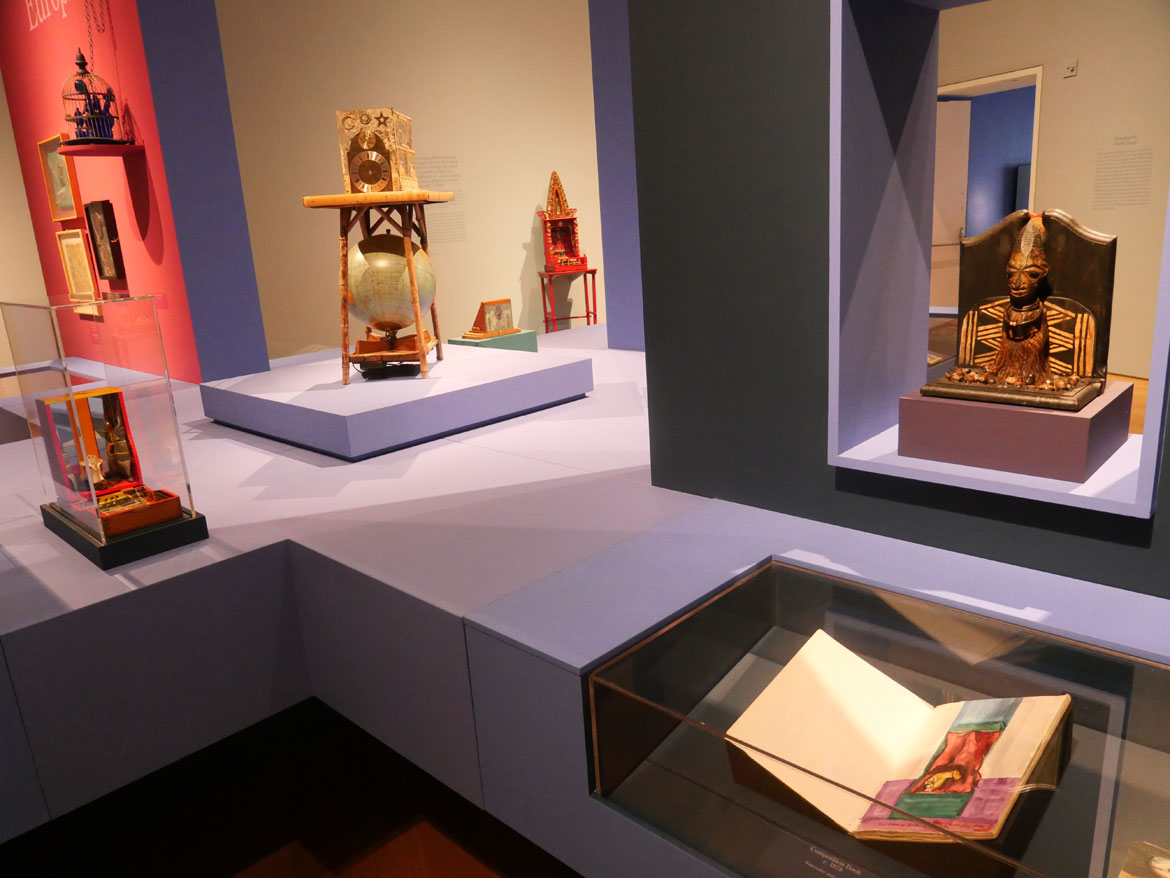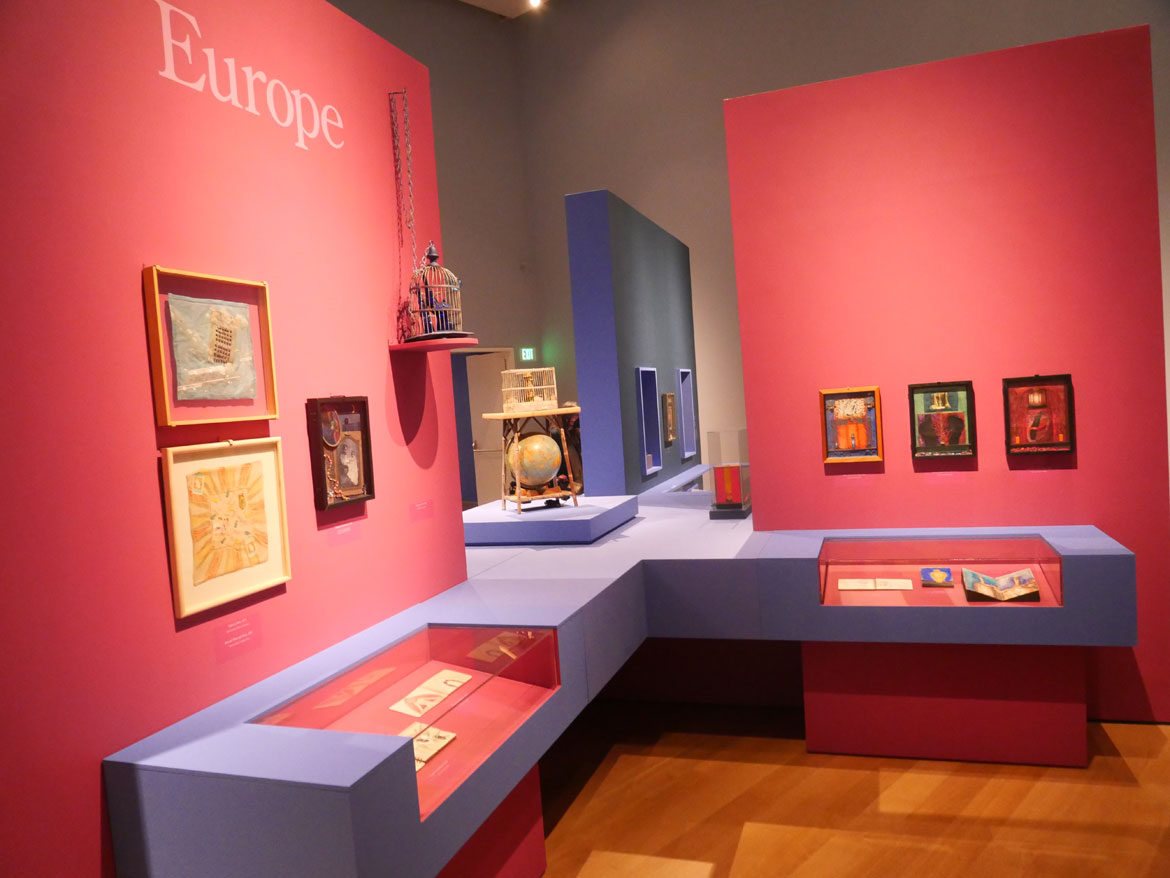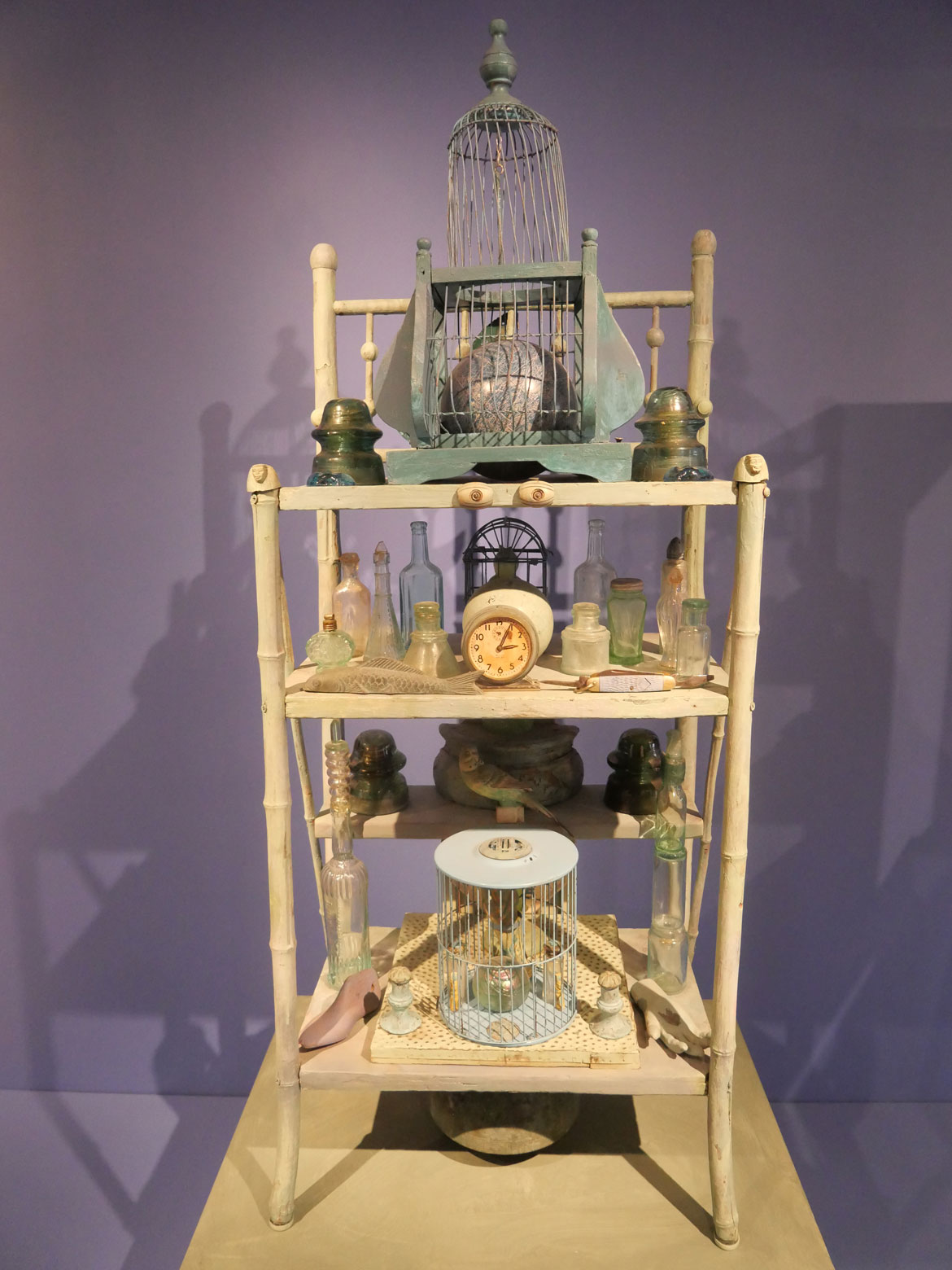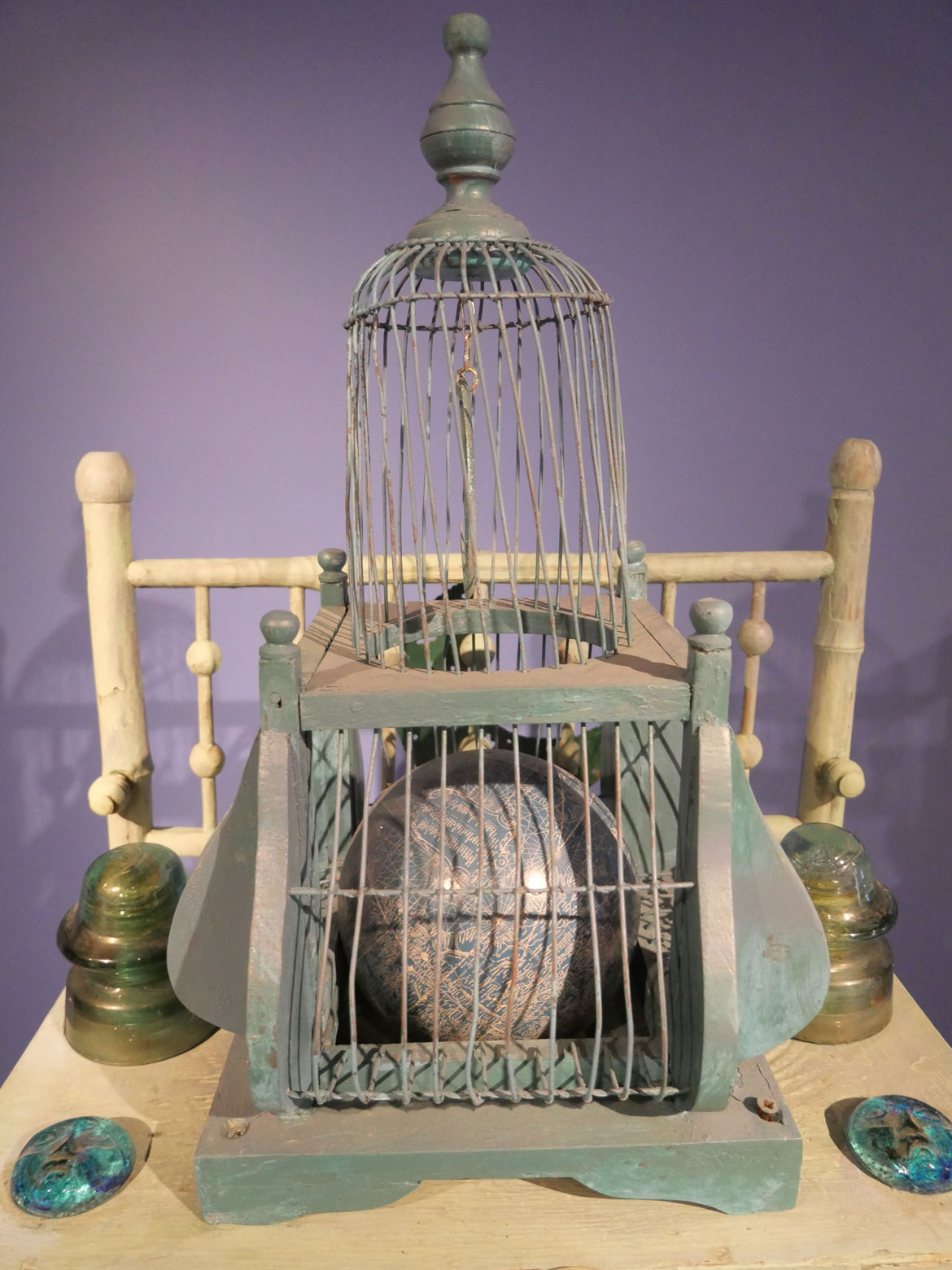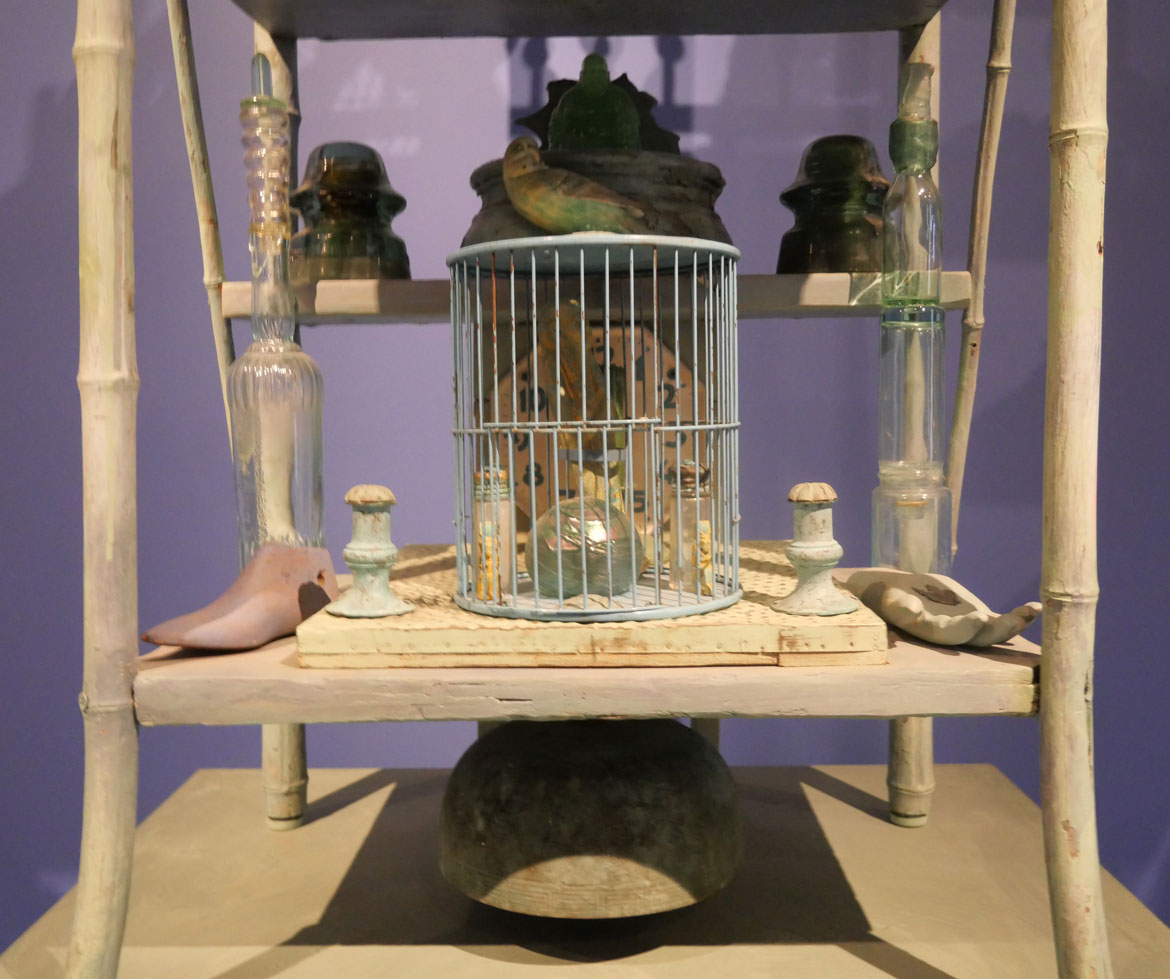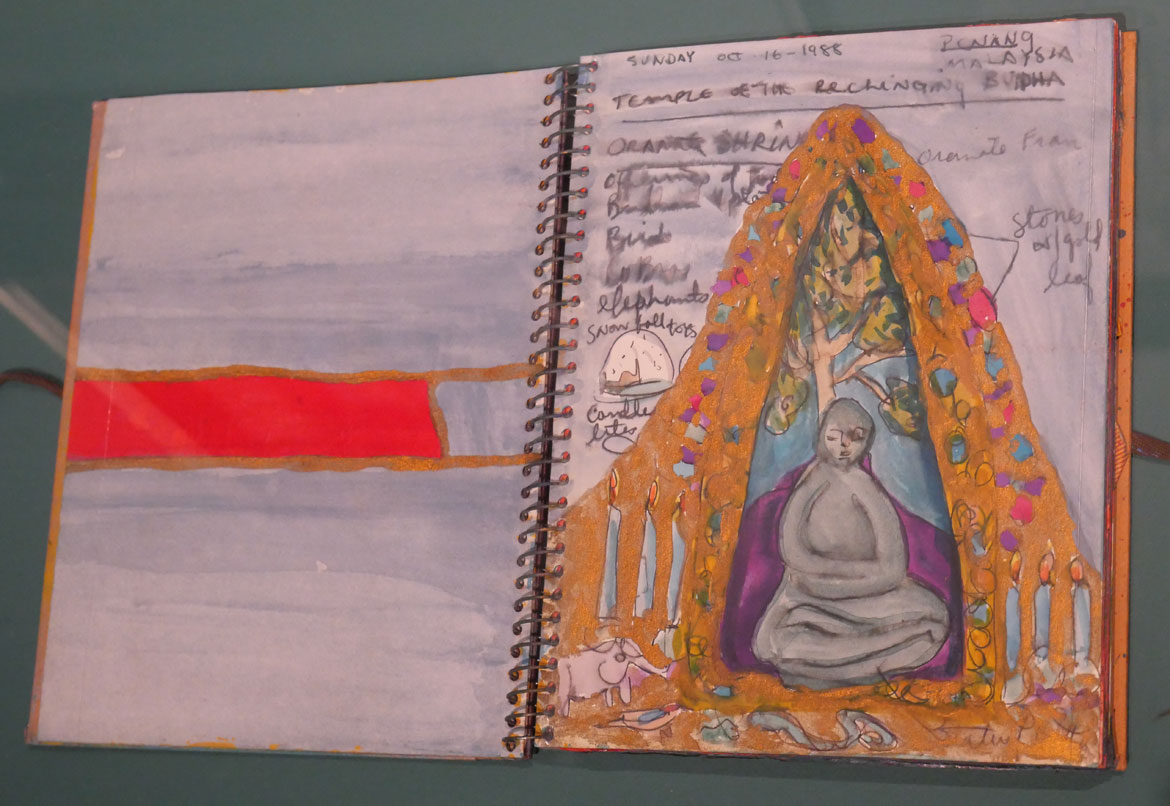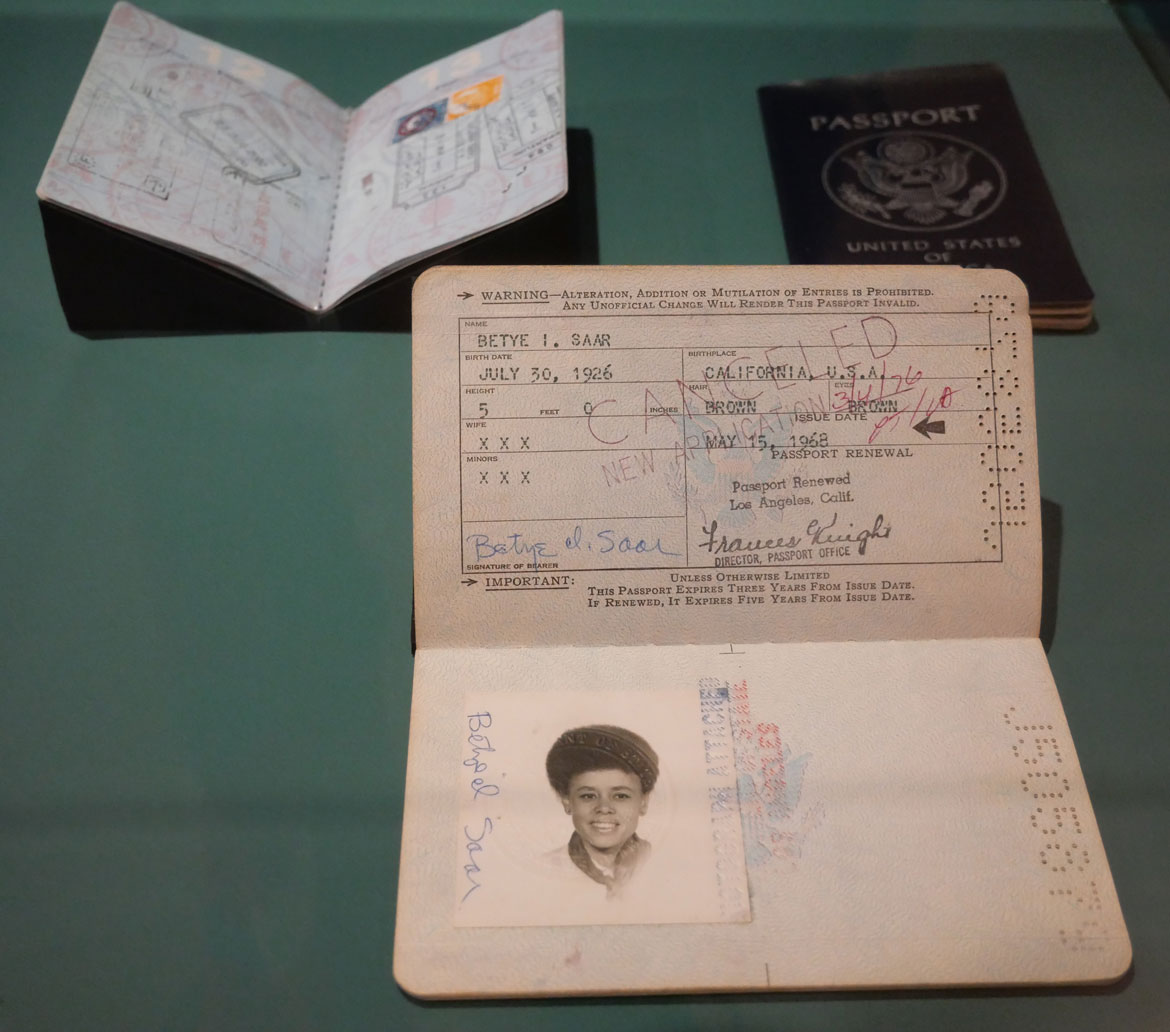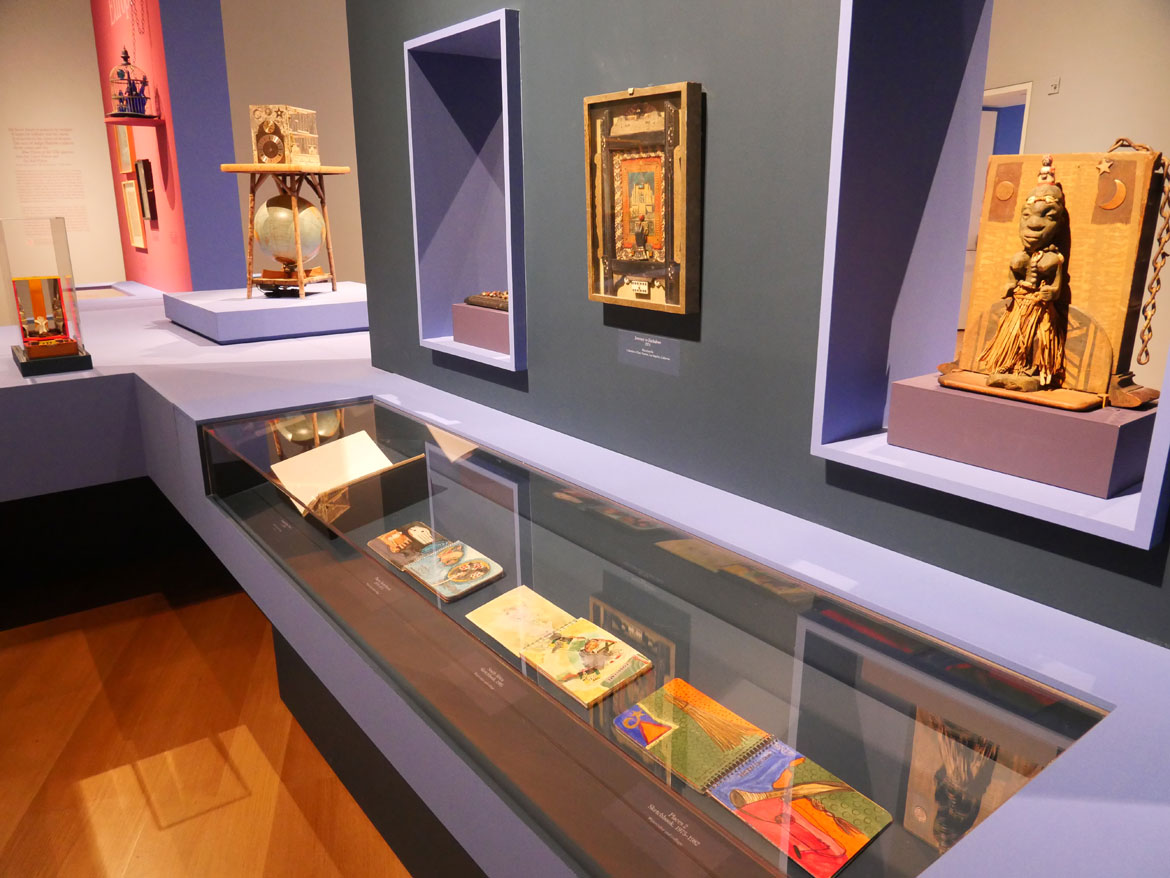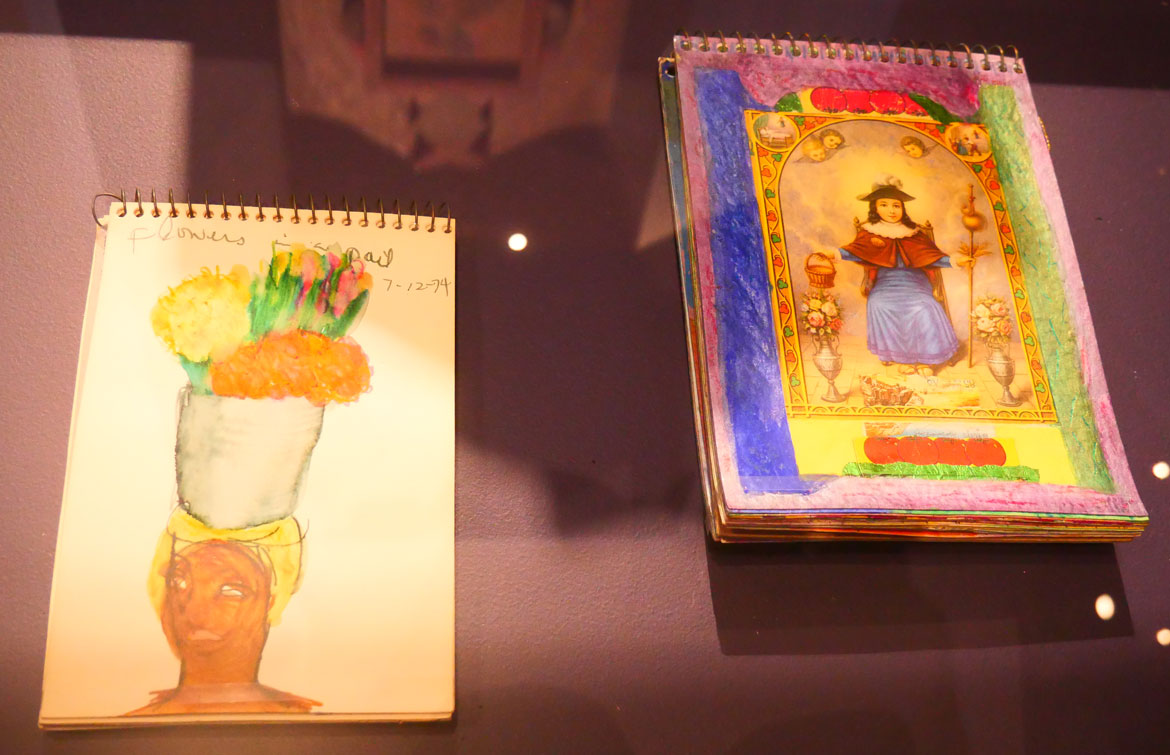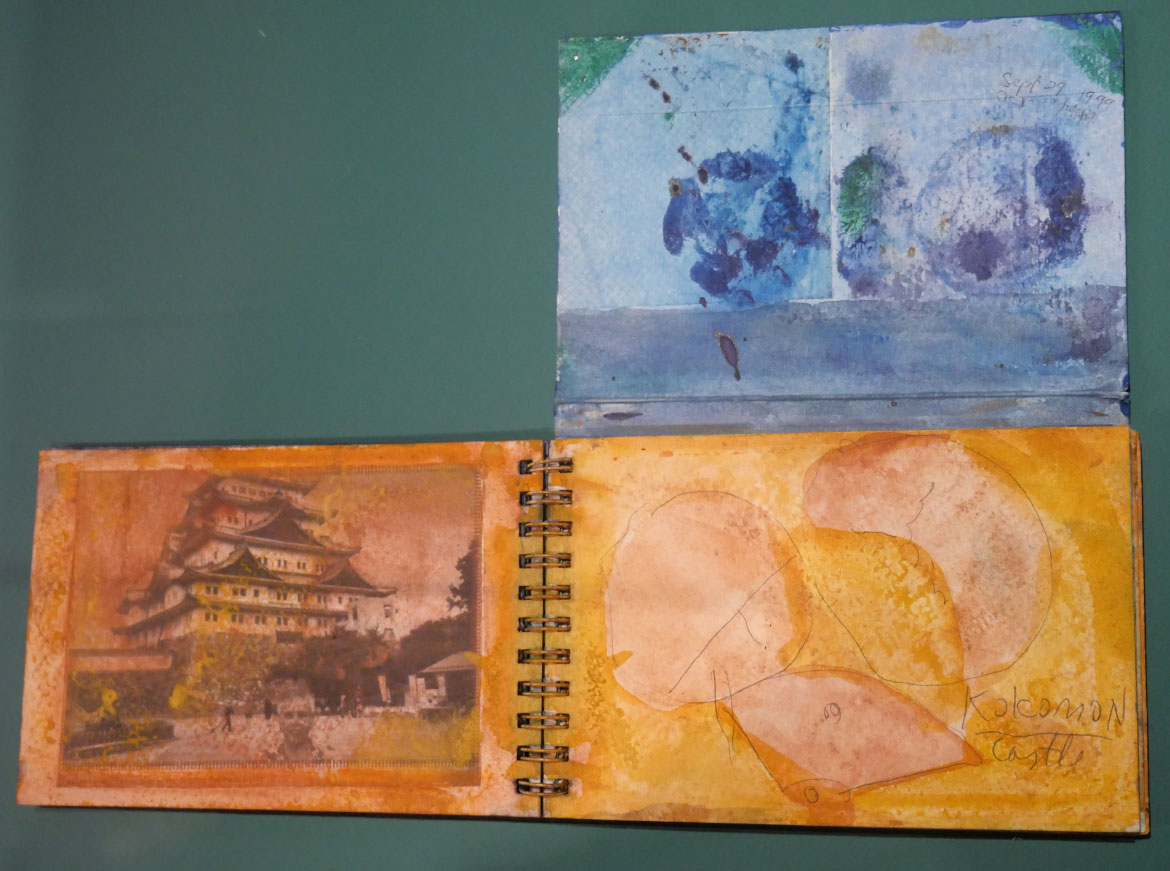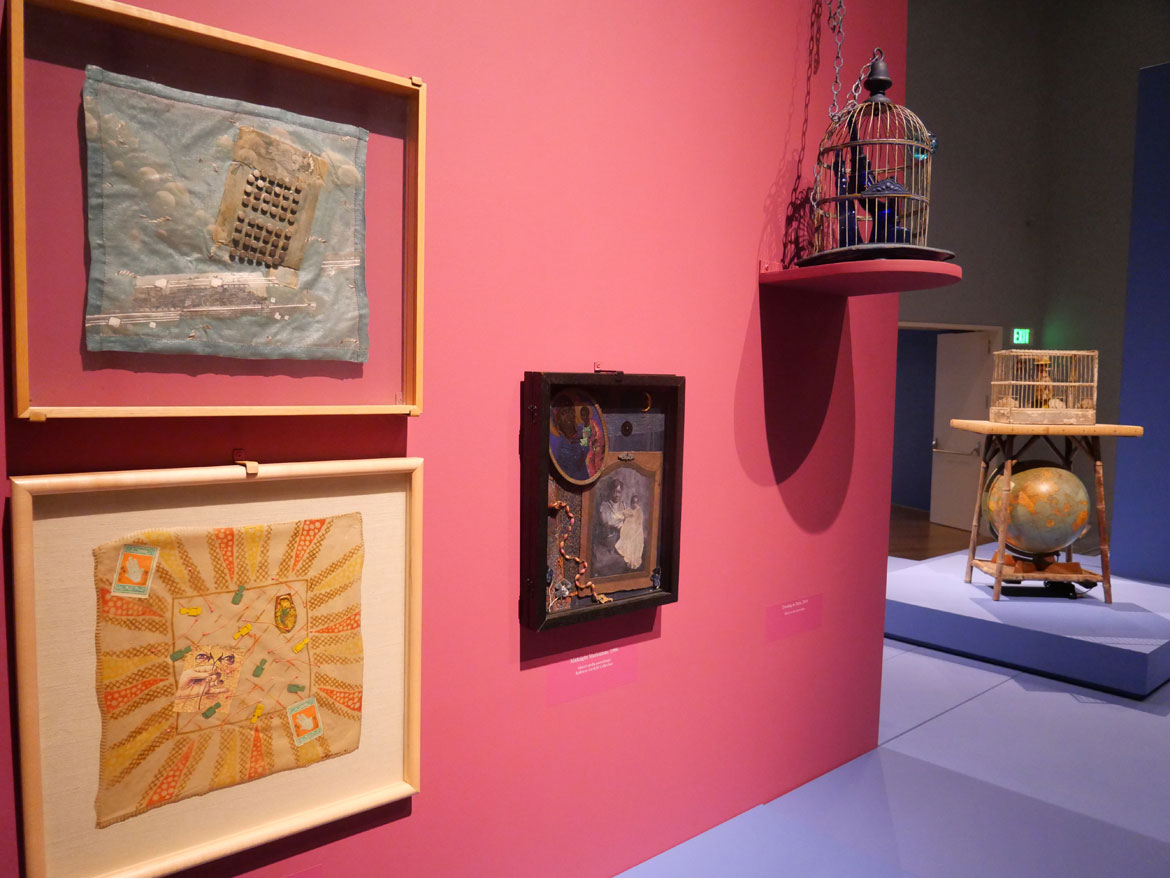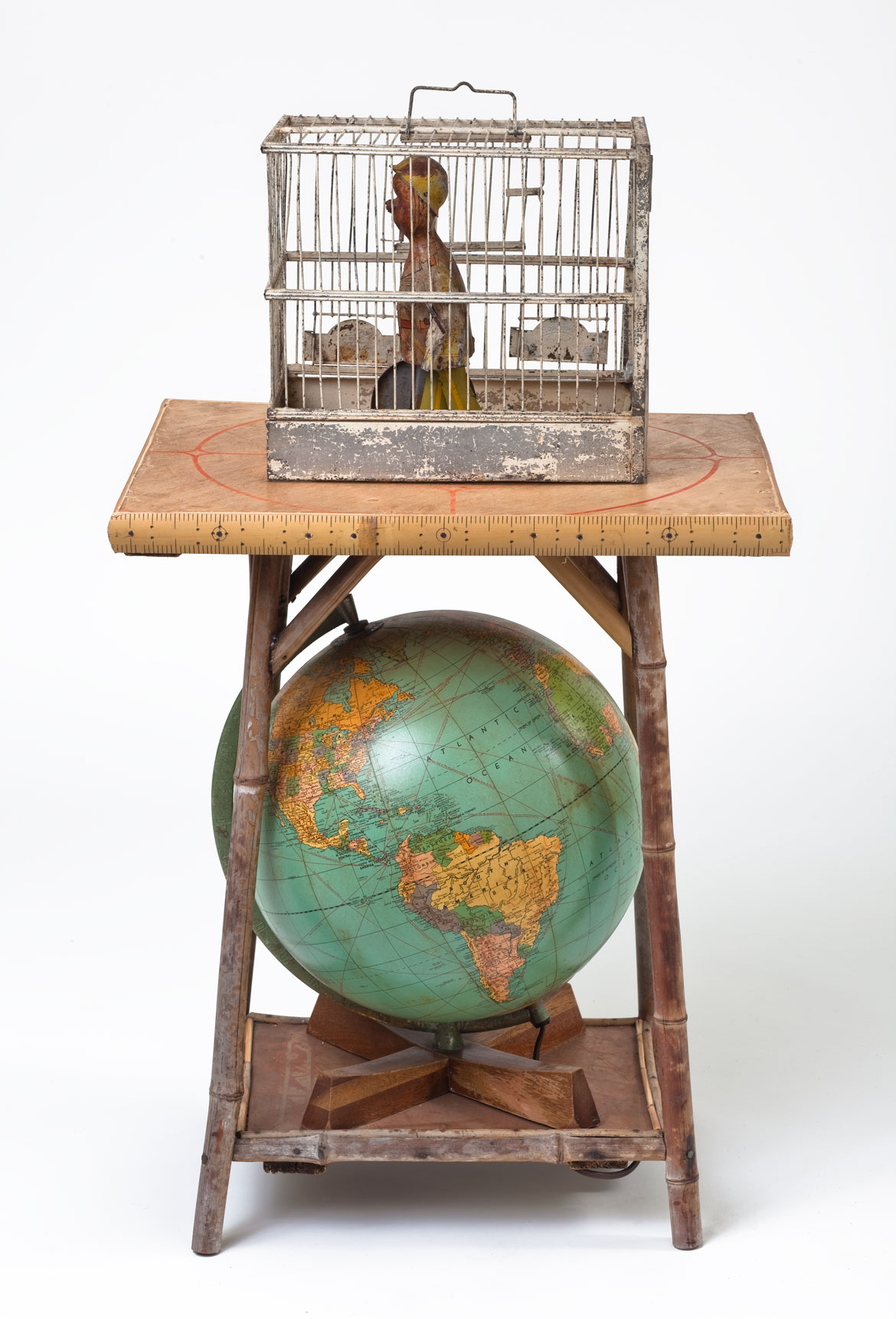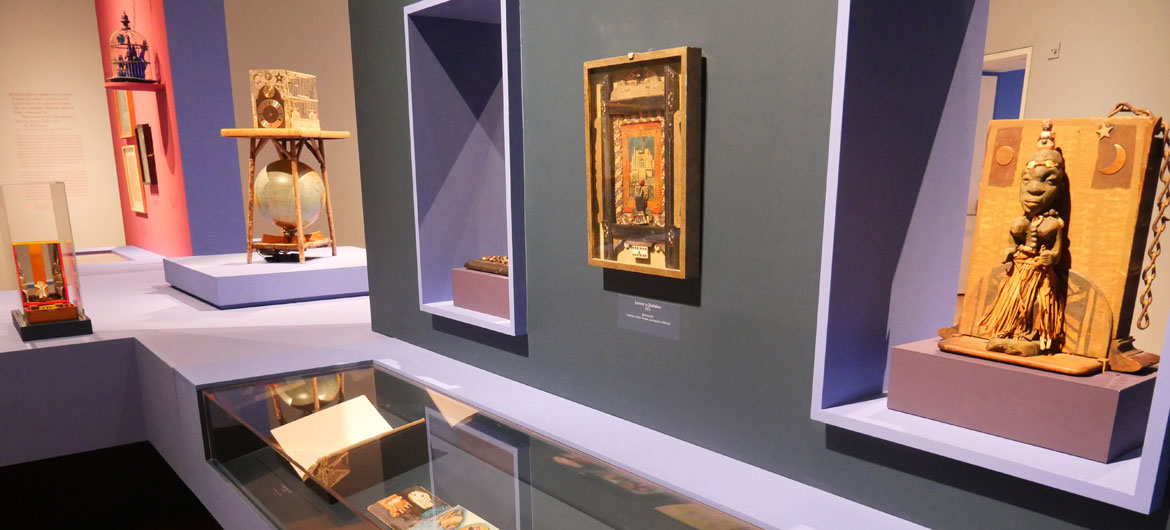In 1968, Betye Saar embodied her growing interest in ritual and ancestral traditions in “Africa,” one of her first assembles. It’s a small wooden box that hinges open to reveal a photo of a Black tribal figure (she was then often using images from National Geographic magazine), buttons, striped Kente fabric, mirrors, a spine bone, brown fur, and a toy circus elephant split in two. The artist seems to be reaching out for connection to a place she’s not yet been.
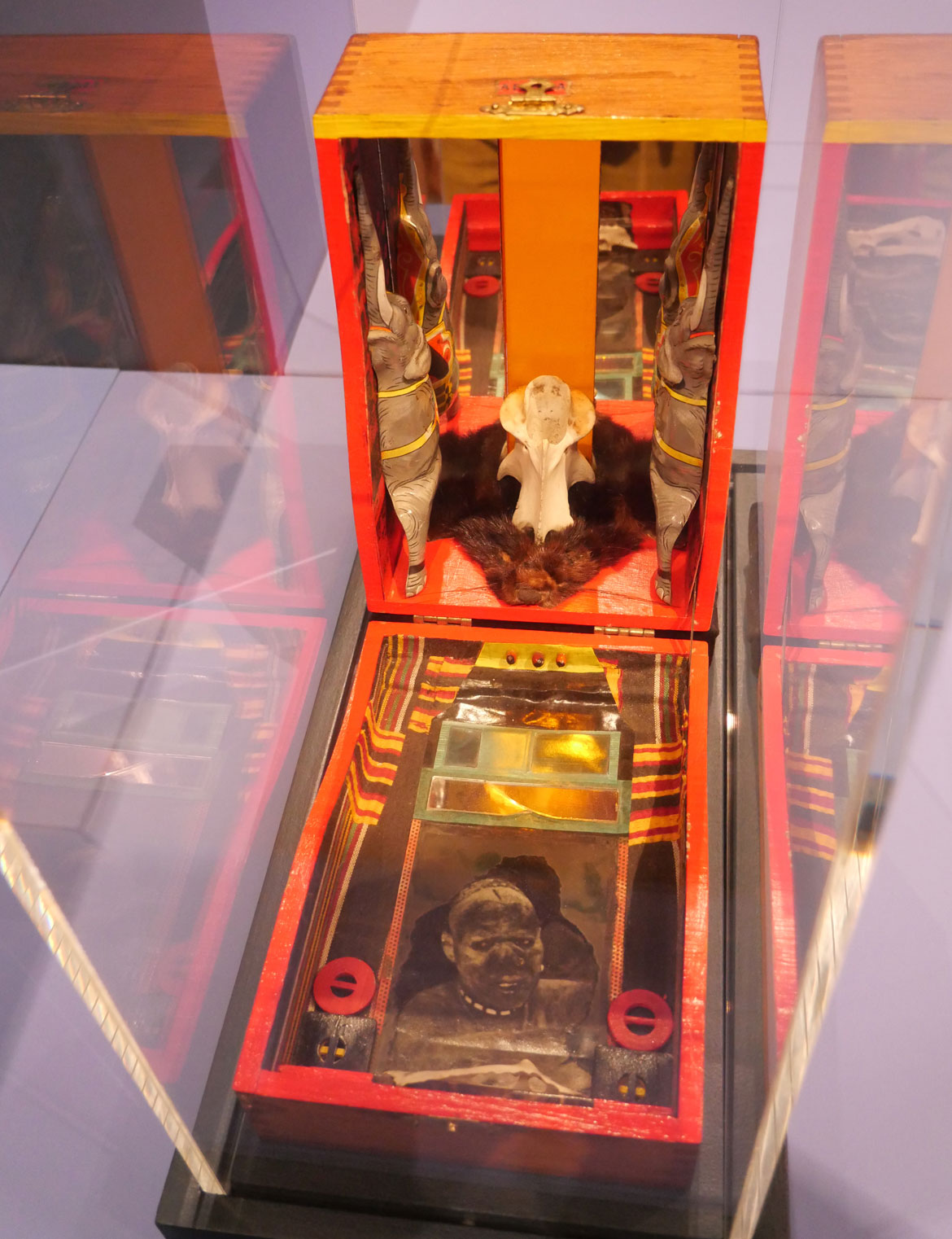
“Sometimes I feel like a medium, the connection between the material and the message. Sometimes, the message is the secrets of Africa, Egypt, Oceania, or the limbo of before birth / after death,” Saar wrote in a 1975 artist statement. “…Sometimes the message charts of strange rituals or whispers of faded memories.”
The dazzling exhibition “Betye Saar: Heart of a Wanderer” at Boston’s Isabella Stewart Gardner Museum from Feb. 16 to May 21, 2023, explores how world travels have inspired the Los Angeles artist’s work—from the sketchbooks she made while on the road to the iconic, magical assemblages that she put together upon her return home.
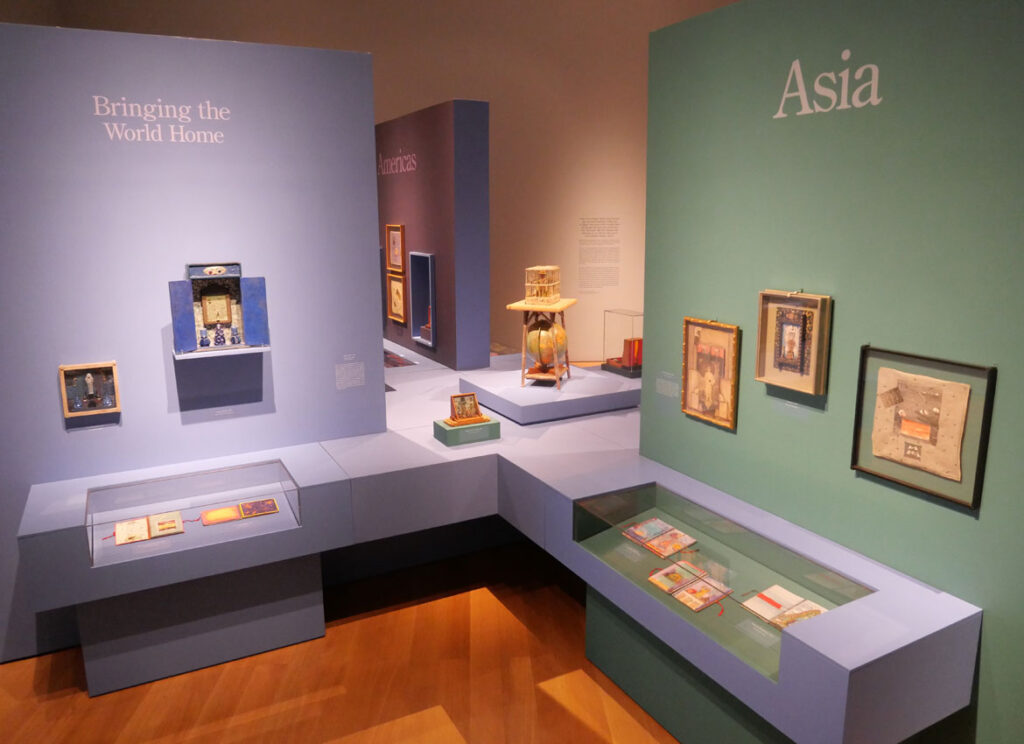
Saar traveled to Europe and Morocco in 1968, then she began to travel widely in the 1970s, when she was in her 40s and her three daughters were adolescents, old enough to be without her for a while. Art fellowships and awards often funded her passage.
Saar’s early travels seem to parallel the Black Arts Movement and Black Power civil rights movement’s searching for the ancestral and spiritual roots of the African diaspora. She visited Haiti in 1974 and ’78, Mexico in 1975, Nigeria in 1978. “I was really interested in going to Haiti because I had never really been to an all-Black country,” Saar told Gardner exhibition curator Diana Seave Greenwald in 2021. Saar went on to visit Taiwan, Japan, Egypt, Bali, Brazil. “To date,” the museum says, “she has visited 32 countries.”
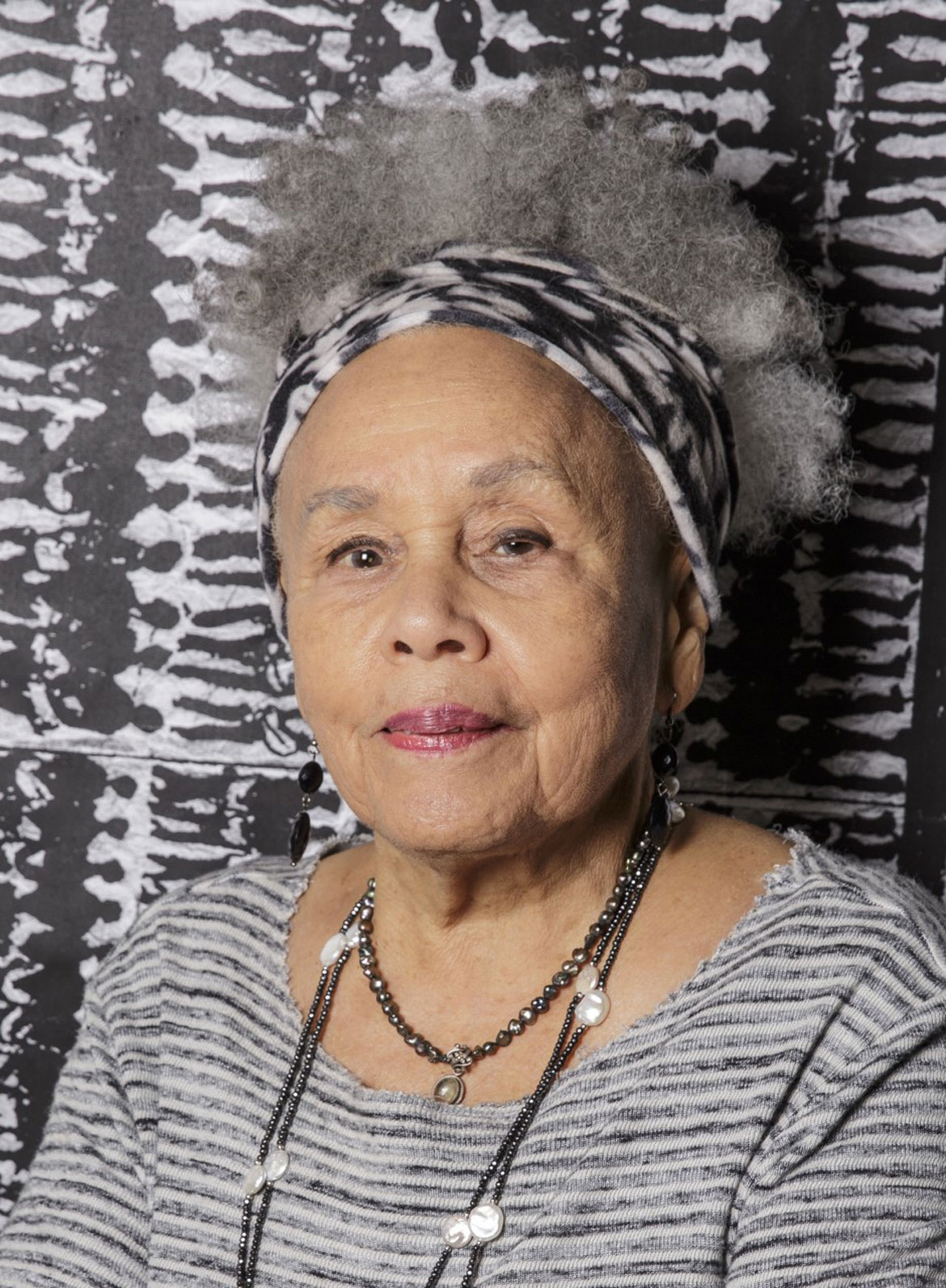
Betye Saar was born in Los Angeles in 1926, her father a Black man from Louisiana, her mother a white woman from Iowa. Her family moved to Pasadena in the early 1930s. She watched Italian immigrant Simon Rodia constructing his 100-foot-tall Watts Towers near her grandmother’s house, like soaring mosaiced church steeples hand-made from glass, pottery, tile, concrete and steel between 1921 and 1954—an inspiration she would carry with her through her life. She studied design at Pasadena City College and the University of California at Los Angeles, graduating in 1949. She founded a design and jewelry firm, married in 1952 and bore three daughters. She studied printmaking at California State University at Long Beach in 1959. The family moved to Laurel Canyon in 1962, where she still lives and works.
Saar made etchings and screenprints in the early 1960s of galloping horses, women and unicorns, pregnant mothers, tarot cards. Around 1966, her art shifted to assemblage. California then was a hotbed of assemblage art that was by turns visionary and politically-engaged—including by Edward Kienholz, Wallace Berman, George Herms and especially the Black artists John Ouftterbridge, Noah Purifoy, Melvin Edwards and Ed Bereal. Purifoy and Judson Powell organized a 1966 exhibition at the Watts Towers Arts Center of art made from the wood, metal and other rubble from the 1965 Watts Uprising. Saar was also inspired by the retrospective of Joseph Cornell’s dreamy surreal assemblages at the Pasadena Art Museum in 1967.
Saar’s early assemblages featured occult imagery—astrology, tarot, palmistry, phrenology, suns, moons, stars. She collected materials to use at LA swap meets and flea markets—and later during her travels. She incorporated family photos, jewelry and fabrics.
Then in groundbreaking and hugely influential artworks, Saar began reclaiming the racist Aunt Jemima pancake mix advertising icon. In “The Liberation of Aunt Jemima,” a small, powerful 1972 shadowbox (not on view here), Saar took a 1930s plastic mammy memo and pencil holder and added a little rifle and Black Power fist, turning the enslaved nanny into a freedom fighter. “My intent was to transform a negative, demeaning figure into a positive, empowered woman … a warrior ready to combat servitude and racism,” Saar said in 1998 (as quoted in the catalog for her 2005 retrospective “Extending the Frozen Moment”).
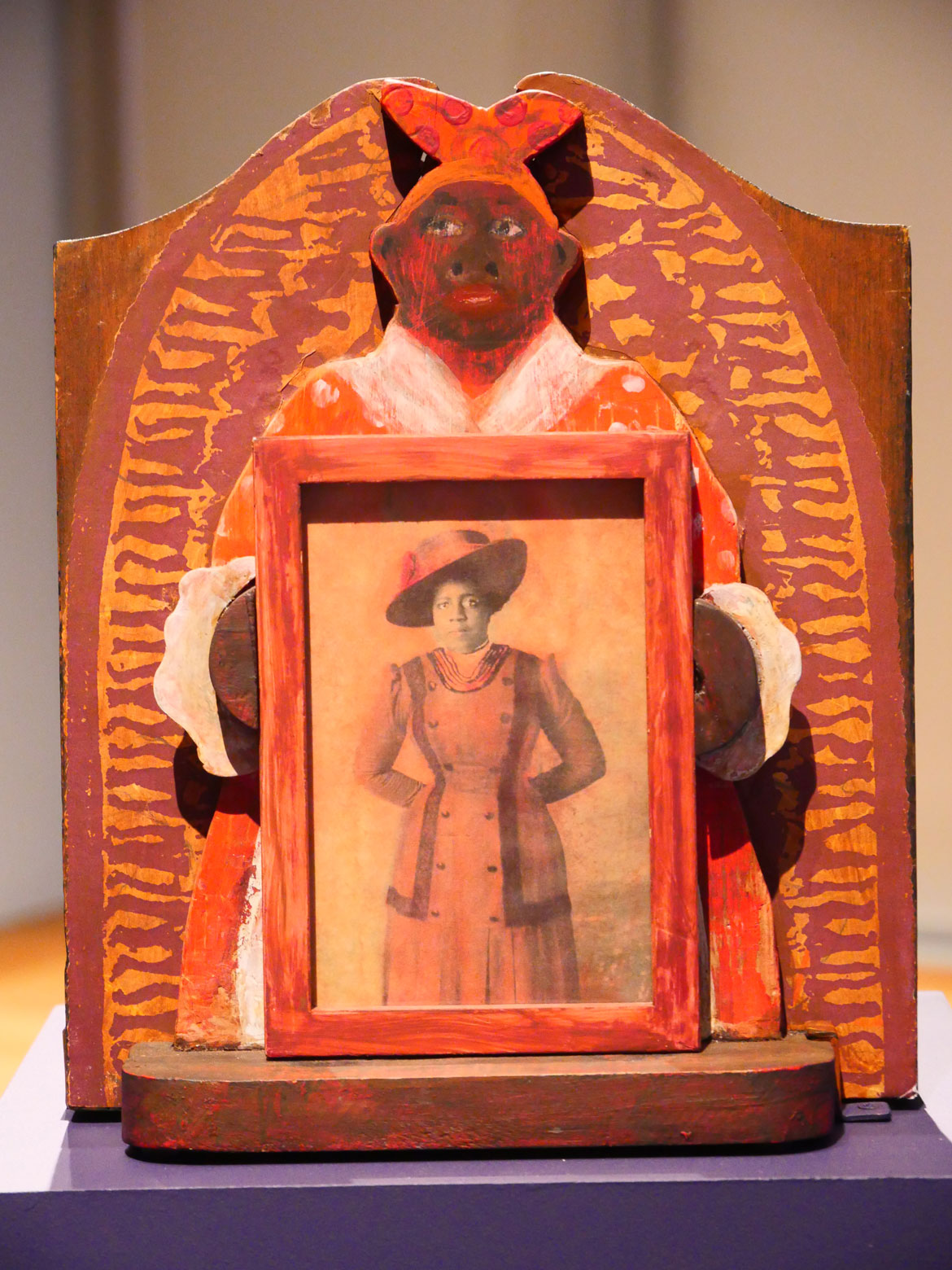
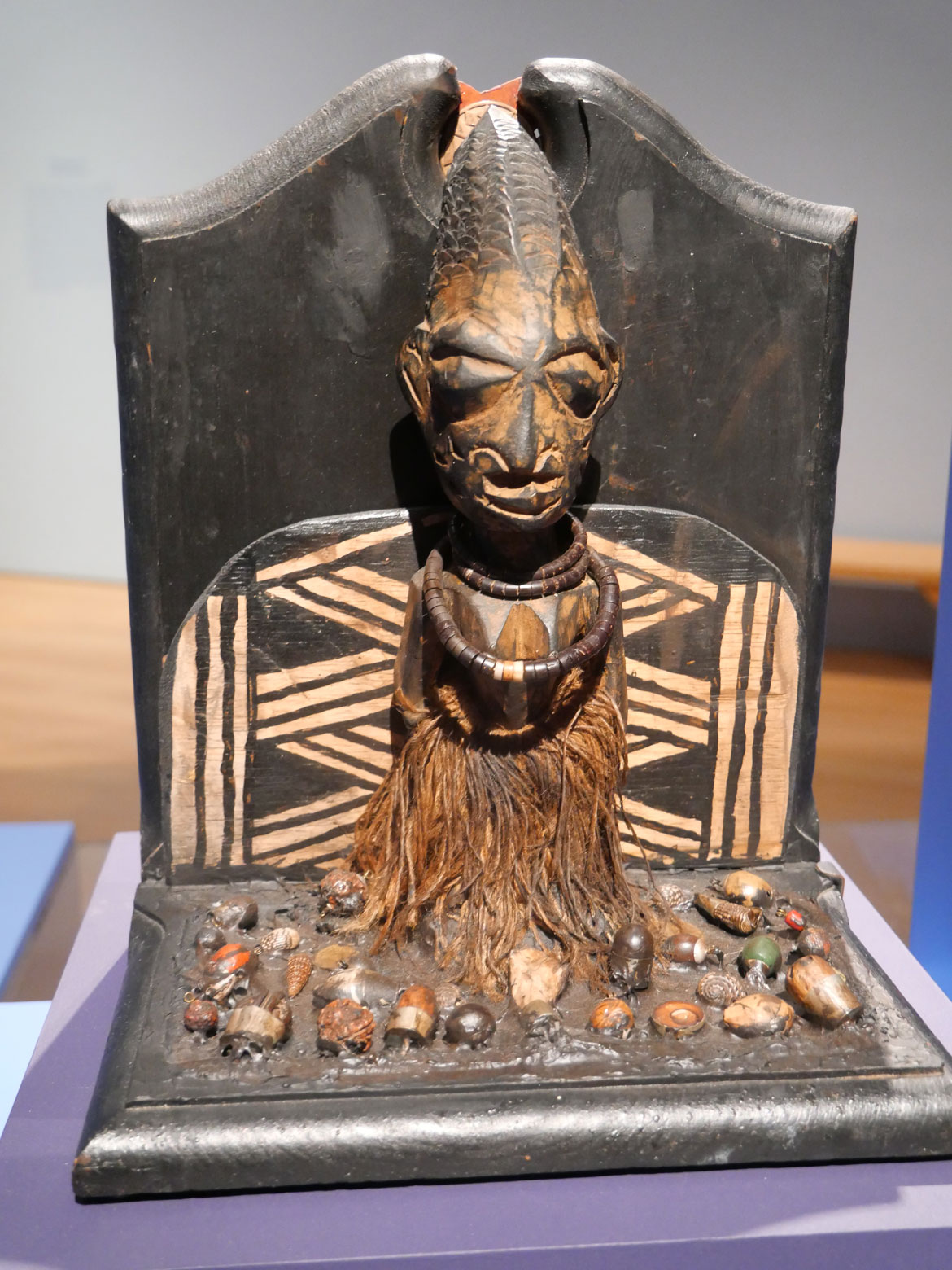
The Gardner exhibition includes Saar’s 2006 assemblage “Migration: Africa to America II.” On one side is a traditional carved African figure. On the reverse is a painted Aunt Jemima holding a vintage photo of an elegant Black woman in a broad-brimmed hat and early 20th century dress. A faded slave ship diagram appears behind them. It feels like a history of African roots, enslavement, liberation, continued oppression.
“My purpose in creating these works is to remind us about the struggle of African Americans and to reclaim the humiliating images of how these workers were once portrayed,” Saar told Jane Carpenter in 2003. “I feel that, however painful, there is honor in re-presenting the past. Racism should neither be ignored or satirized, as it is a form of bondage for everyone, regardless of color. Racism cannot be conquered until it is confronted.”
While in Chicago with the artist David Hammons for the National Conference of Artists in 1970, Saar visited Chicago’s Field Museum of Natural History. “That’s when my work turned from European mysticism to third-world mysticism,” Saar told Carol Eliel, curator of the 2019 exhibition “Betye Saar: Call and Response” at the Los Angeles County Museum of Art, in 2018. “Before I was using symbols that were more Eurocentric. But when I went to the Field Museum, in the basement they had all this work from Africa, Oceania, and even China and Japan—everything that wasn’t European, which was displayed nicely upstairs. All this other strange stuff was down in the basement . We were the only people there, down in this basement with this weird, fetish, magic stuff.” (Note: “Extending the Frozen Moment” and the 2011 exhibition “Now Dig This: Art & Black Los Angeles 1960-1980” place this trip at 1970, the Gardner exhibition puts the trip in 1974, and Eliel dates the visit to 1964.)
Back home in Los Angeles afterward, Saar collected similar materials to use in her work—“leather, hair, shells, bones.” She wanted her assemblages to embody “a Black or African American consciousness or awareness, and recycling it into art form,” Saar told Eliel in 2018.
Saar’s inspirations came to include folk art, visionary art and yard shows, bottle trees and shrines, African-American culture, Haitian Vodou, the Watts Towers, the midcentury California assemblage art movement, Byzantine reliquaries, the Black Arts Movement, the Black Power civil rights movement that arose after the assassination of Martin Luther King Jr. in 1968, and feminism (she participated in the groundbreaking cooperative Womanspace gallery with Judy Chicago and others).
Saar’s art sketchbooks are typically working objects, spiral-bound books filled with schematic diagrams jotted in ballpoint pen to plan out the art ideas inspired by the materials she’s found. “Which comes first, the sketch or the object? It’s the object. The object comes first,” Saar told Eliel in 2018. “I start with the found object and transform it, making it into something different, changing the idea of its use into an emotion or a feeling.”


But on her trips abroad, Saar made travel sketchbooks and scrapbooks, begun on the road and often finished in her LA studio. In these books, collages, drawings and paintings are worked up into stand-alone artworks. During her 1974 trip to Haiti, for example, which is included in the Gardner exhibition, Saar filled the sketchbook she carried with images of crosses, feathers, moon and suns, tourist stamps, the Citadelle Laferrière, stamps featuring President M. Jean-Claude Duvalier, playing cards, rainbows. sacred hearts, a scrap of paper reading “Hoodoo Creek.”
“Her finished assemblages,” a Gardner exhibition sign says, “speak more to her fascination with Haitian Vodou, a religion that combines elements of West and Central African religions and Catholicism. Her trips throughout the Americas deepened her interest in hybrid religions—from Vodou to Santéria—that have their origins in communities of enslaved people who were forcibly transported from West and Central Africa to the Americas.”
“Whenever I travel, I like to go to the shrines, or relics of shrines. A lot of things have been taken away, but there’s always some place that carries materials from the alternative religion…like the botánicas, or [other stores] that are connected with alternative spirituality, Vodou and things like that,” the Gardner museum quotes Saar.
Saar’s assemblages are powered by alchemical combinations of found beads, perfume jars, masks, clocks, chains, pocket knives, wind-up toys, bells, statues of birds and faces and Buddhas. She often incorporates bird cages that evoke slavery, prison, whats in our minds, caged birds, escape, freedom.
Saar skillfully uses the the stagecraft of shrines and altars—the central focus, objects that seem freighted with the past and a feeling of the ancestors, mysterious and perhaps symbolic resonances between the objects, the hierarchy of objects from little to big, the use of mirrors and glass and rich colors to make the artworks visually dazzle, the motif of eyes that feel as if they’re watching us. The modest scale of her assemblages often make them feel like the altars found in homes or shops, small, personal, intimate holy spaces flashing with energy amidst the jumble of everyday life.
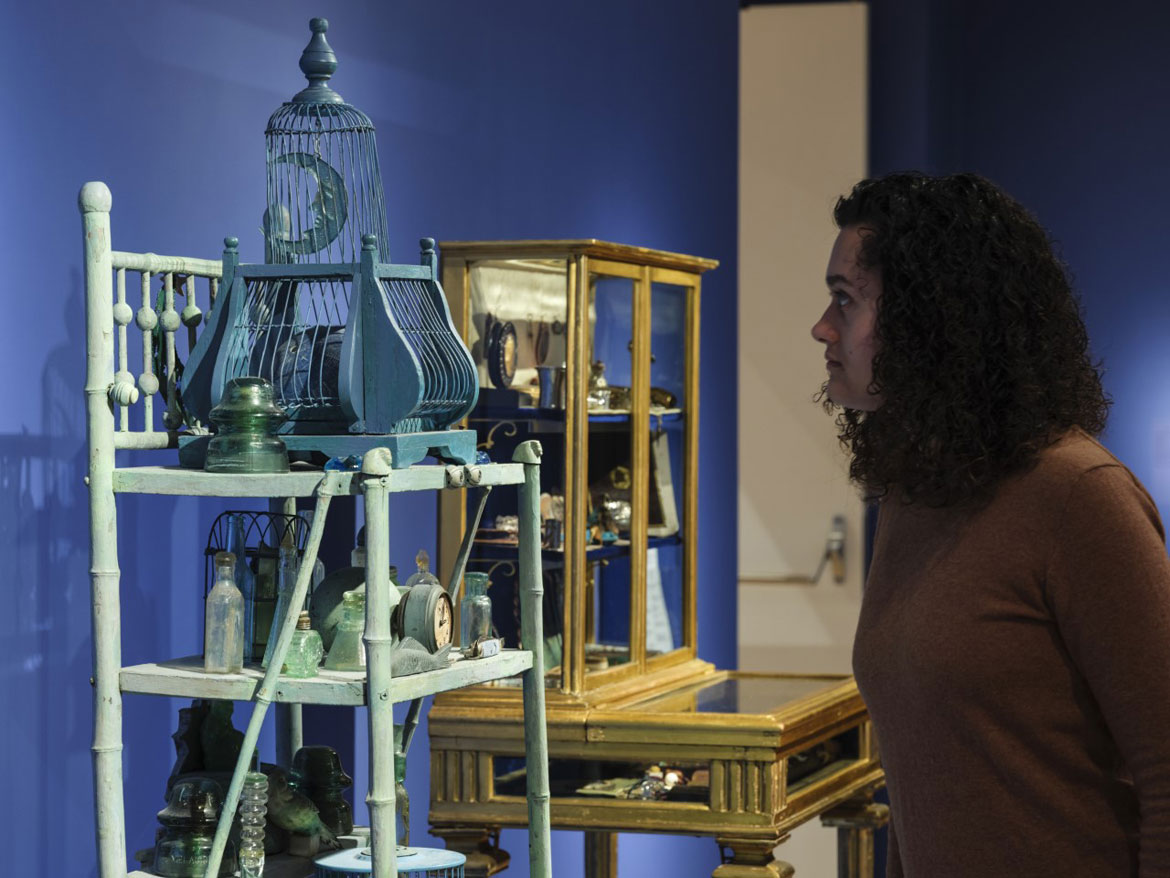
Attending the Second World Black and African Festival of Arts and Culture in Lagos, Nigeria, in 1977, inspired Saar to regularly incorporate “the names of African spirits and images of African masks in her work,” an exhibit sign explains.
Saar was inspired by “widespread Buddhist practice of bringing offerings to local temples and shrines,” the museum says, during her U.S. State Department supported 1988 tour of East and Southeast Asia, including Malaysia. She sent home boxes of materials for her art. Recalling this trip, she told Greenwald in 2021, “I love to get off of a plane at a place and I don’t understand the language you’re speaking. I don’t understand why they dress that way. … As soon as you get off … you would just right away be in an entirely different situation.”
A 1994 artist residency in a villa in Bellagio, Italy, drew her “to the mystical, evocative pageantry of Catholic ritual,” the museum says.
During a 2000 trip to Egypt, Saar told Greenwald in 2021, “One of the things that I found interesting was how important Nubia [present-day Sudan] was to Egypt. And most of the people there [in Egypt] had dark skin and kinky hair. You know, like the Nubians did. And now, in our history, they never even mention Nubia. … Wow. Racism is something.”
Her adventures fueled her art. “Spirituality means different things to different people, but it’s the feeling that I’m after,” Saar said in 1994. “The feeling that when you look at something that I do…that you feel different, or…curious about something that is unknown in your own self.”
If this is the kind of coverage of arts, cultures and activisms you appreciate, please support Wonderland by contributing to Wonderland on Patreon. And sign up for our free, occasional newsletter so that you don’t miss any of our reporting. (All content ©Greg Cook 2023 or the respective creators.)
